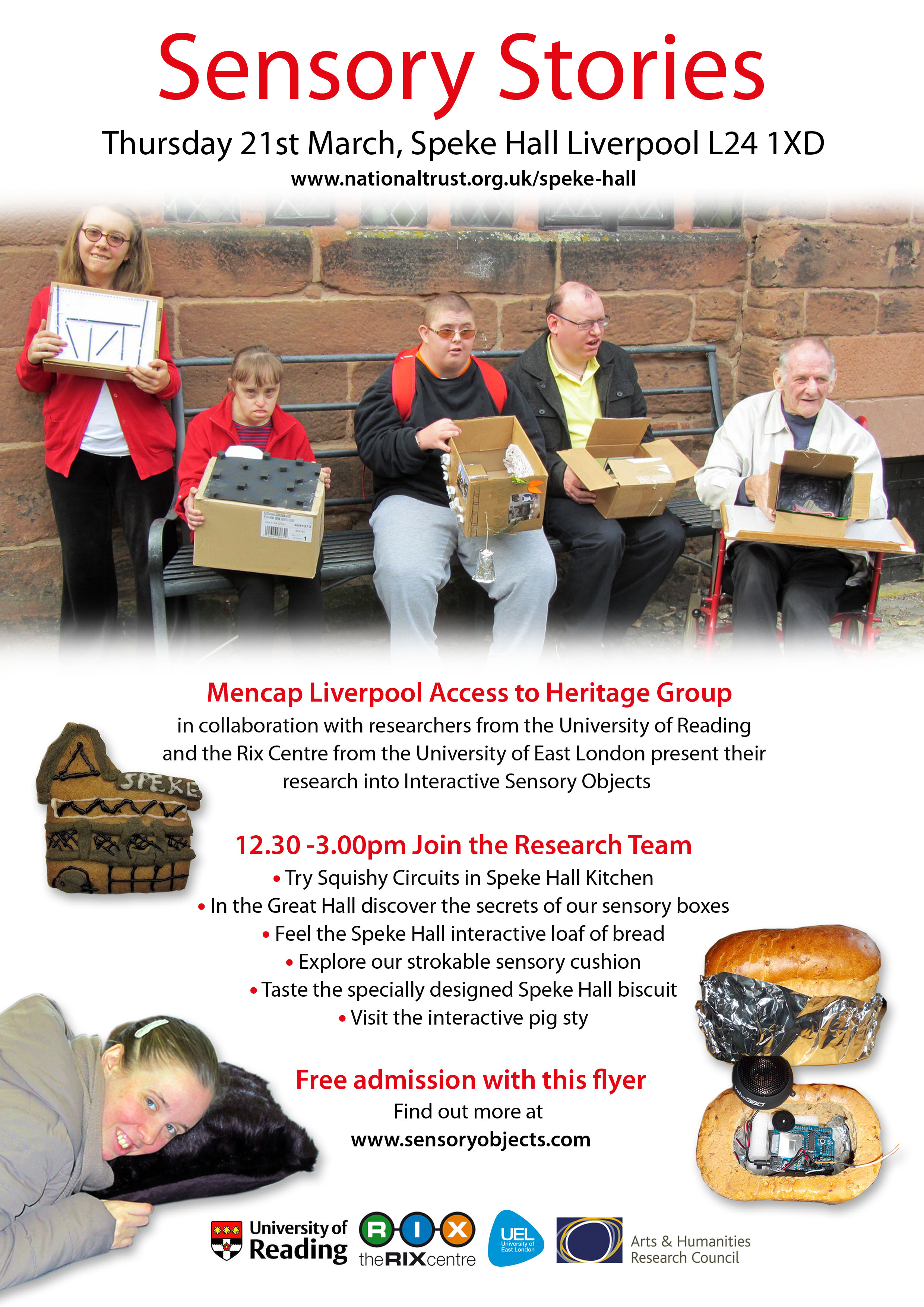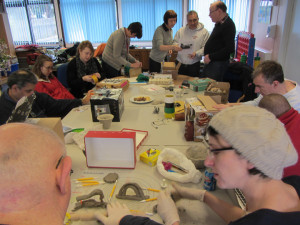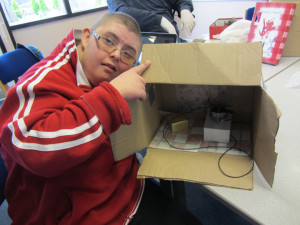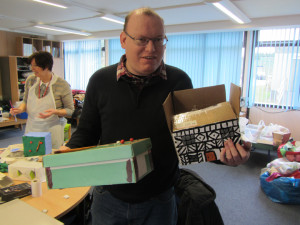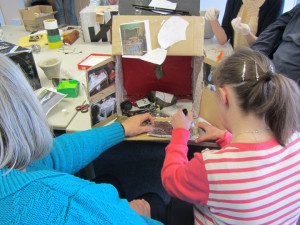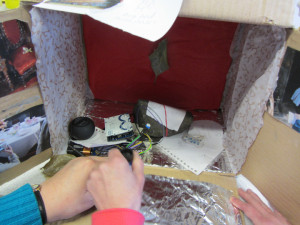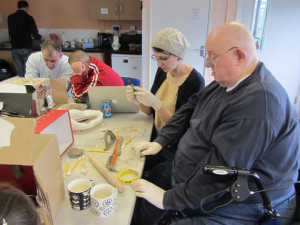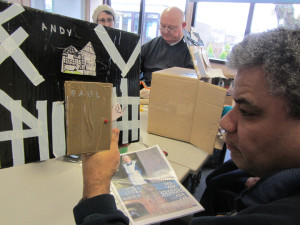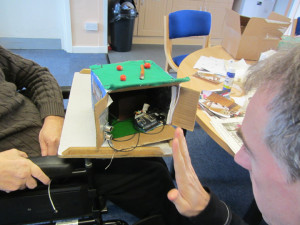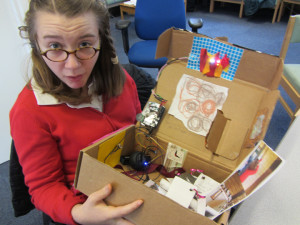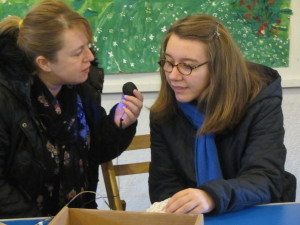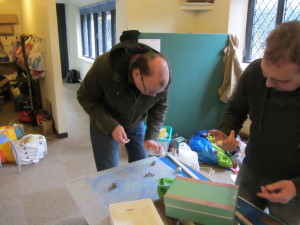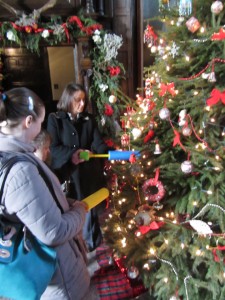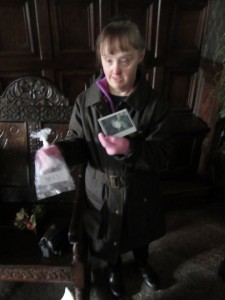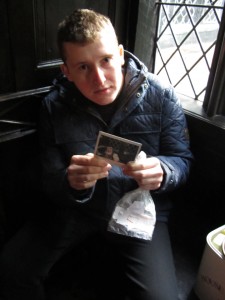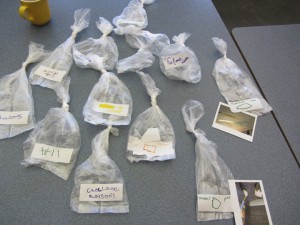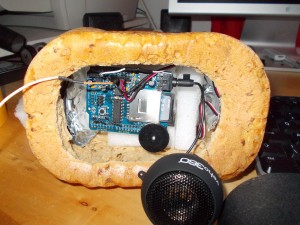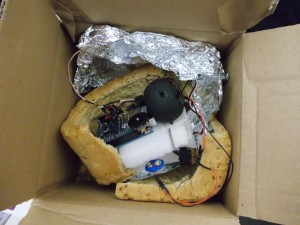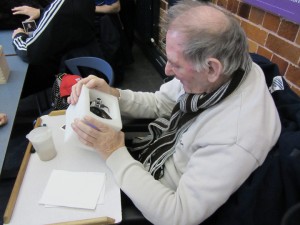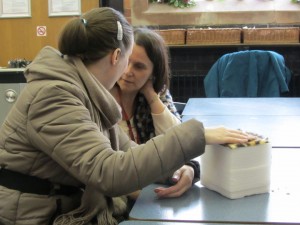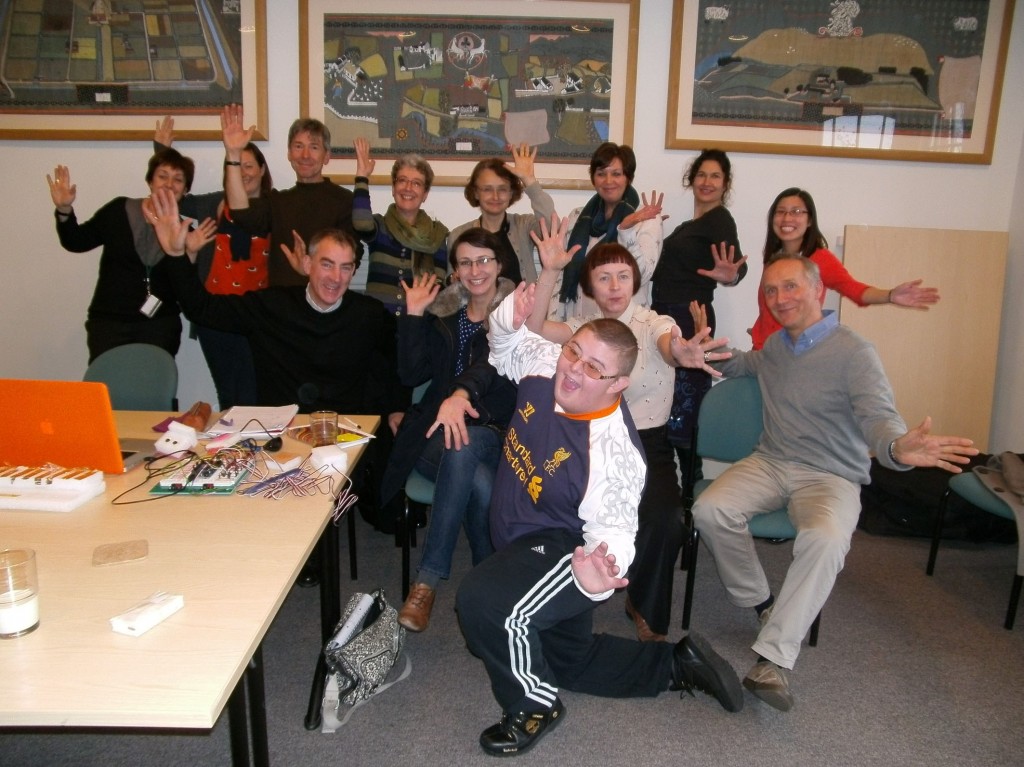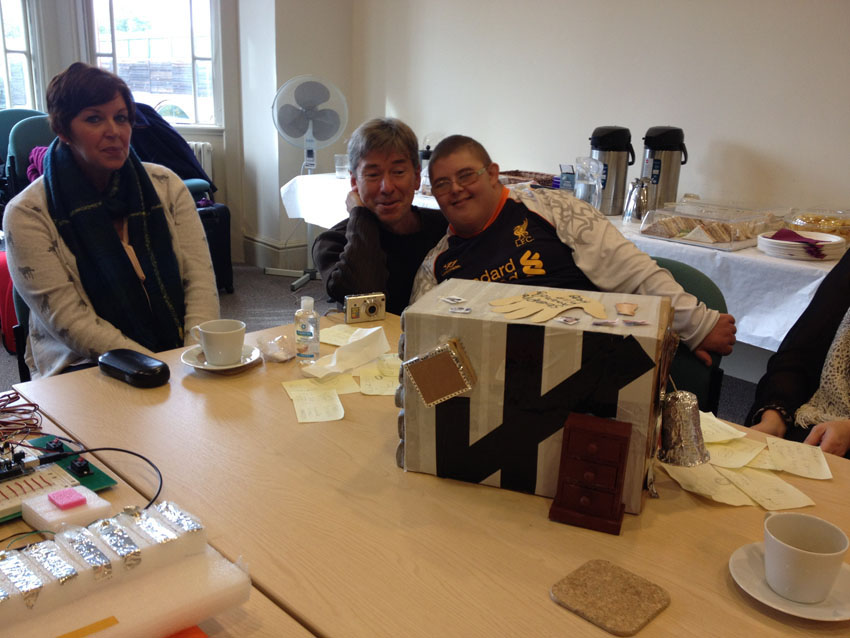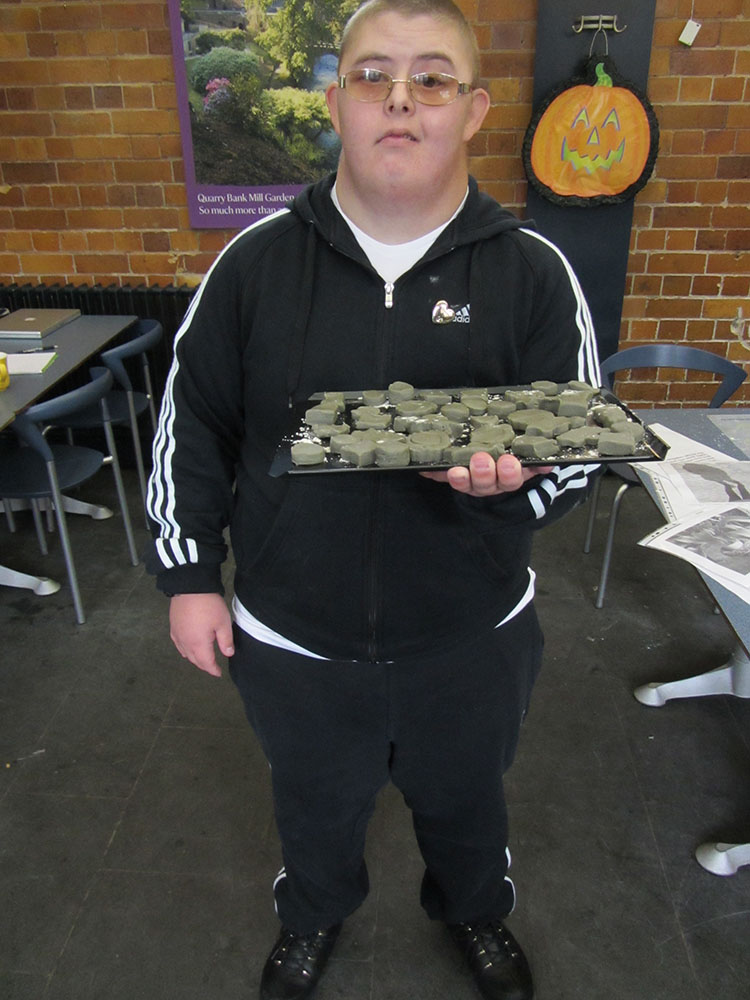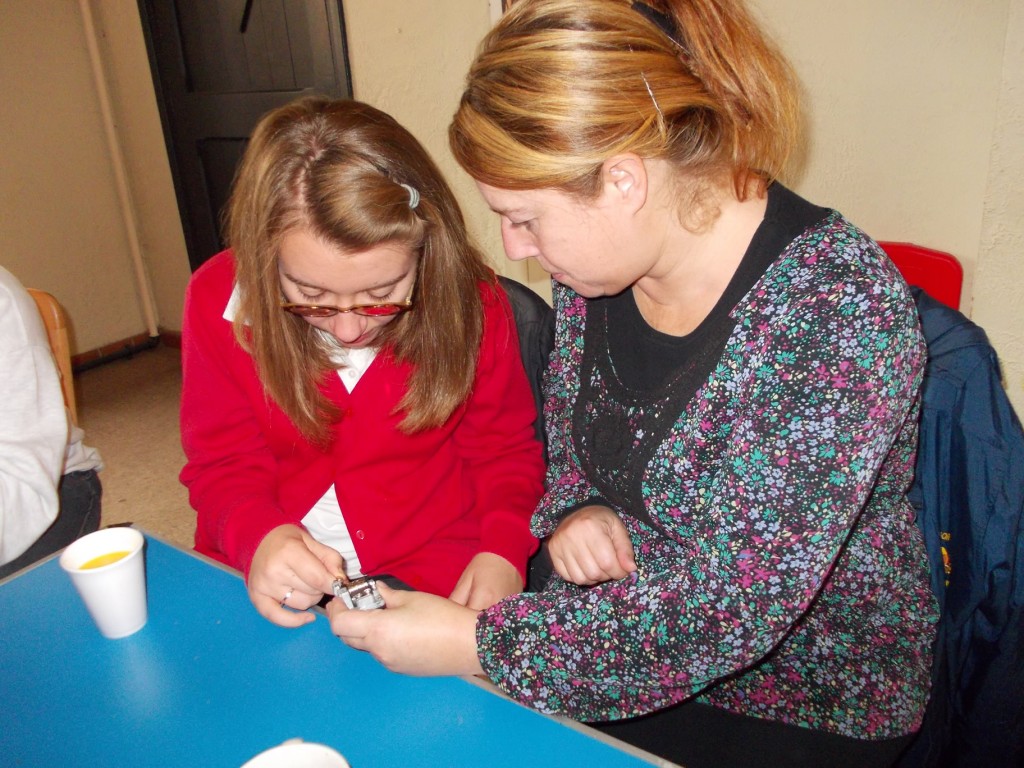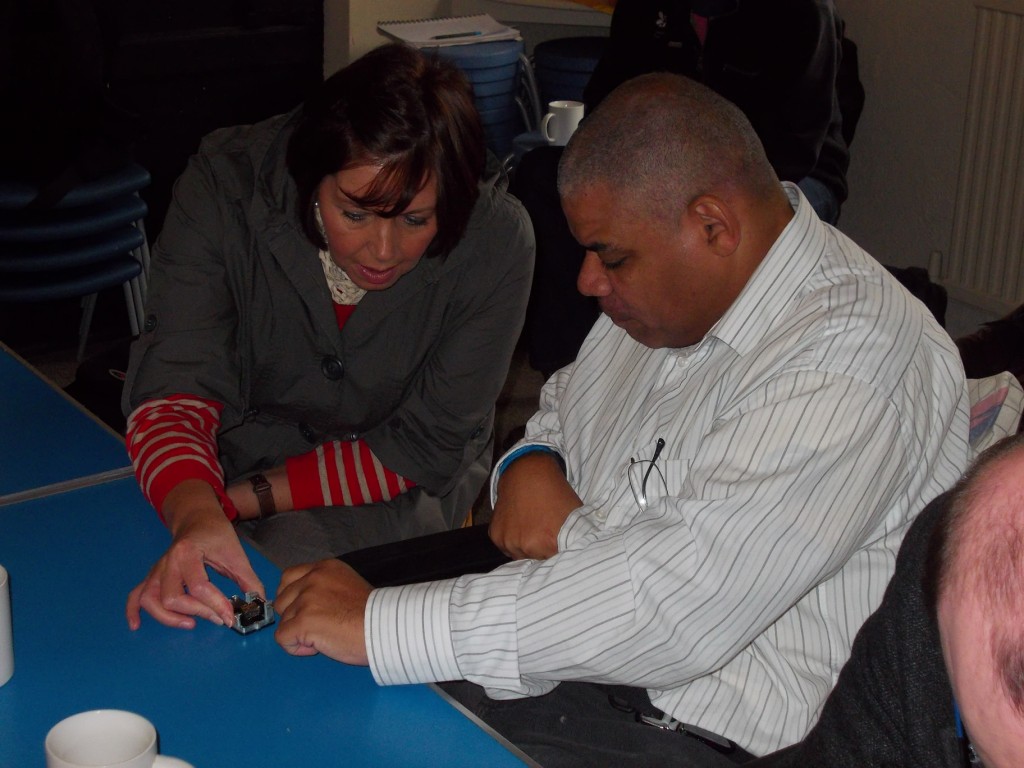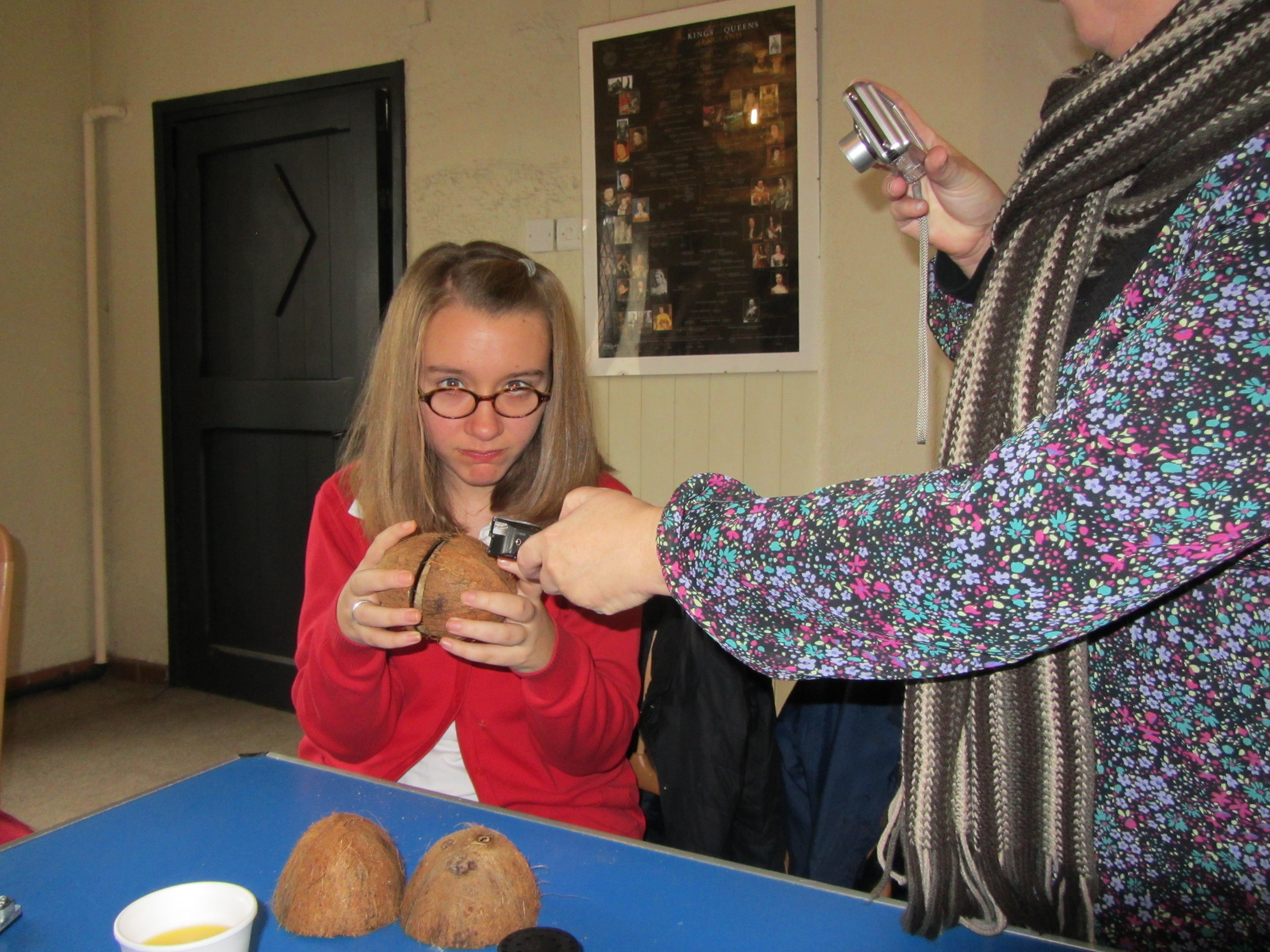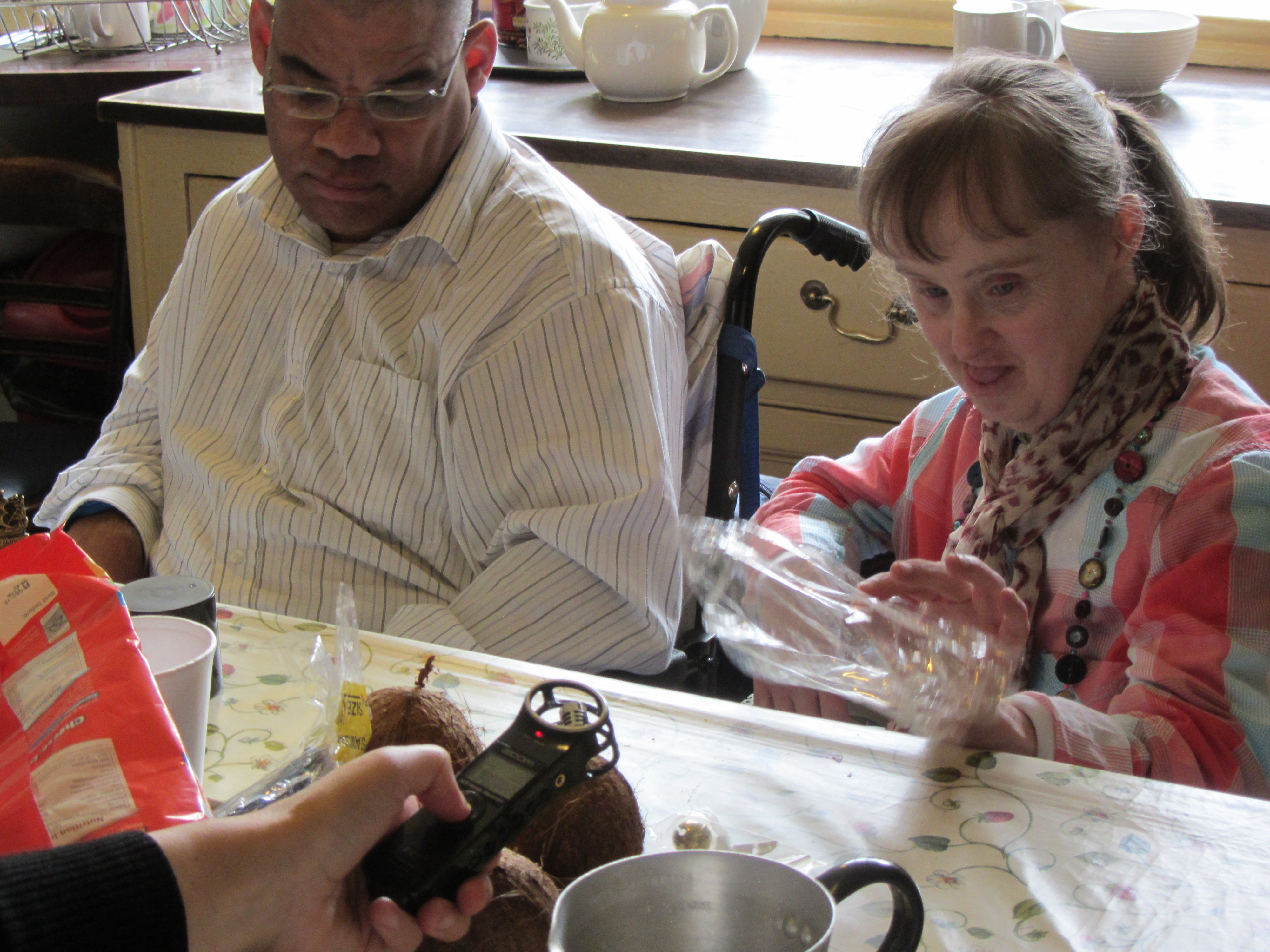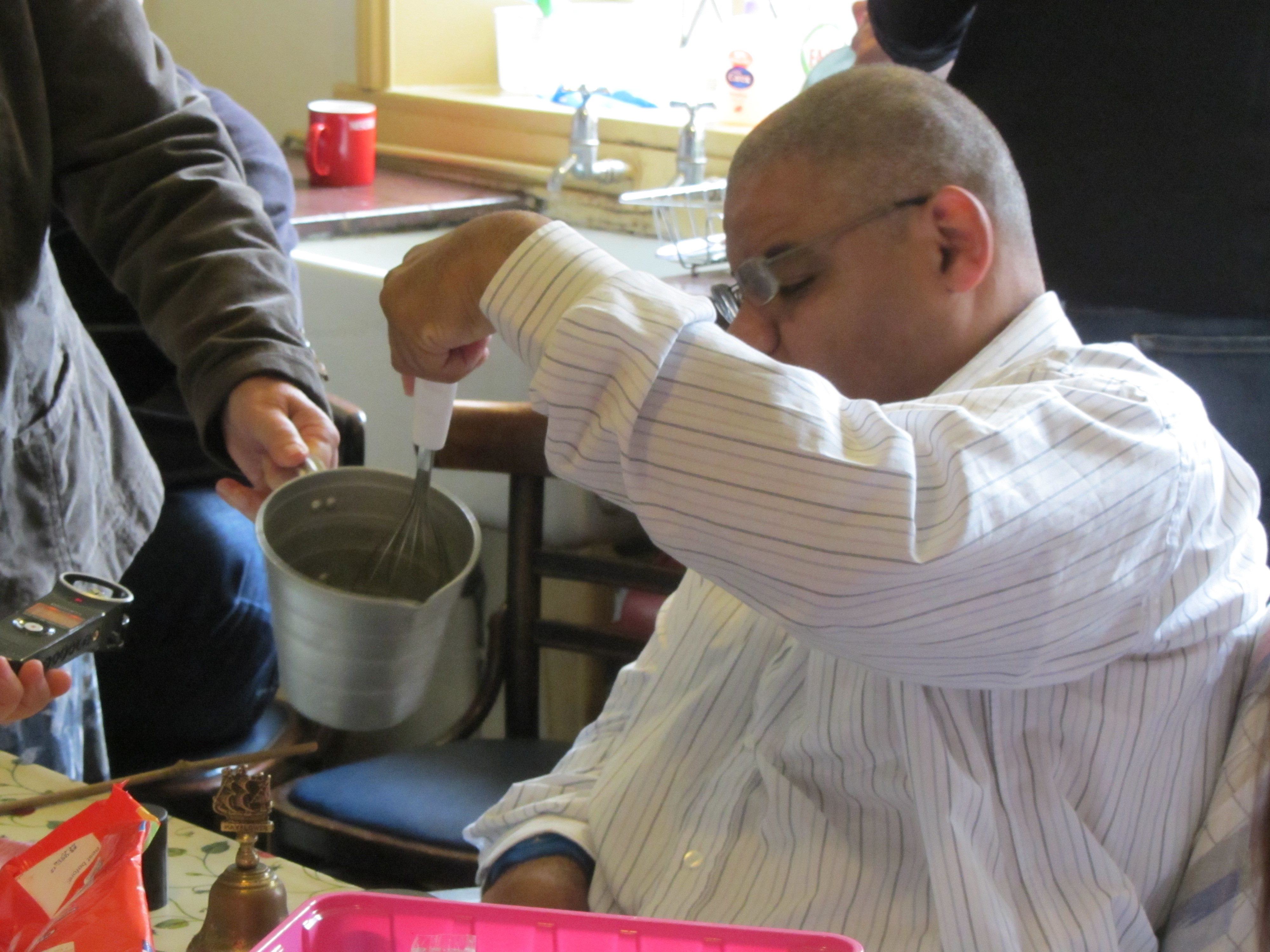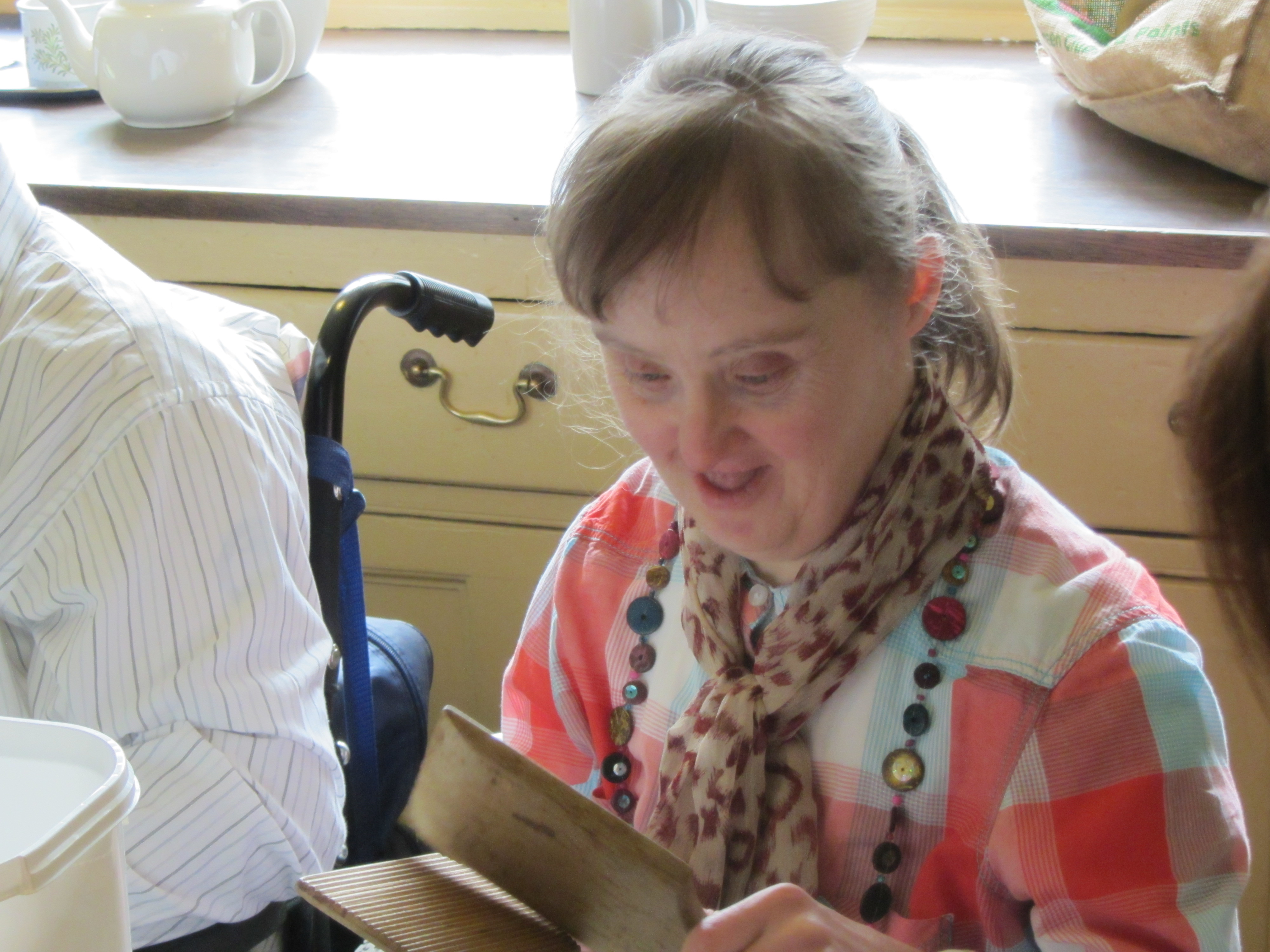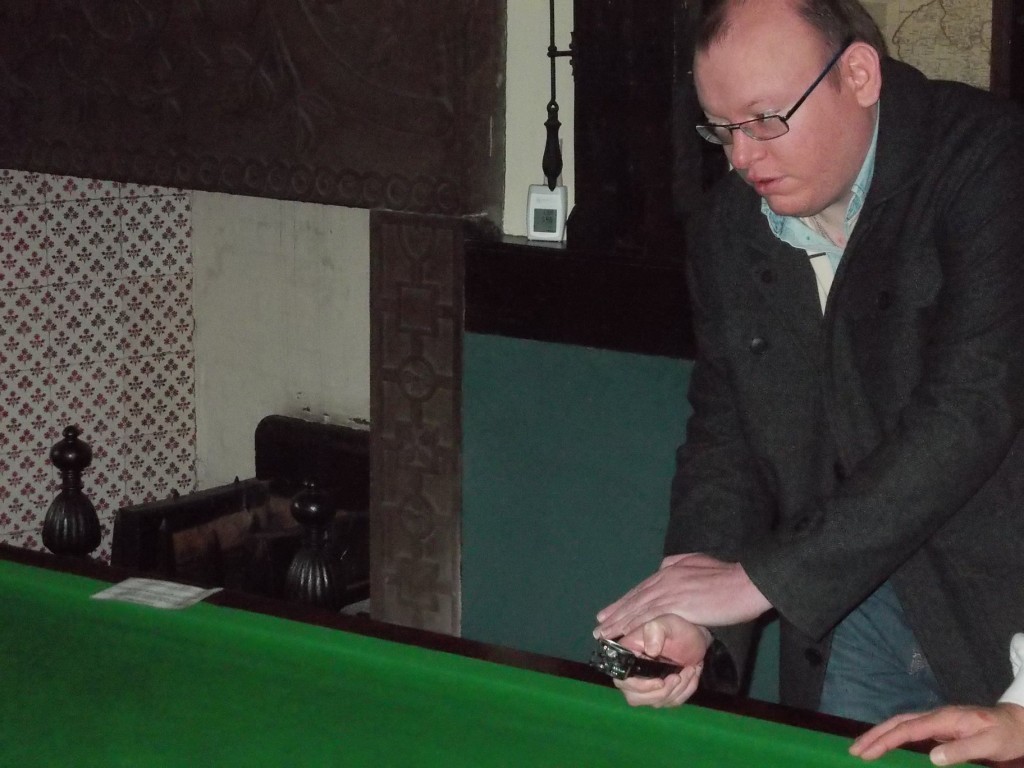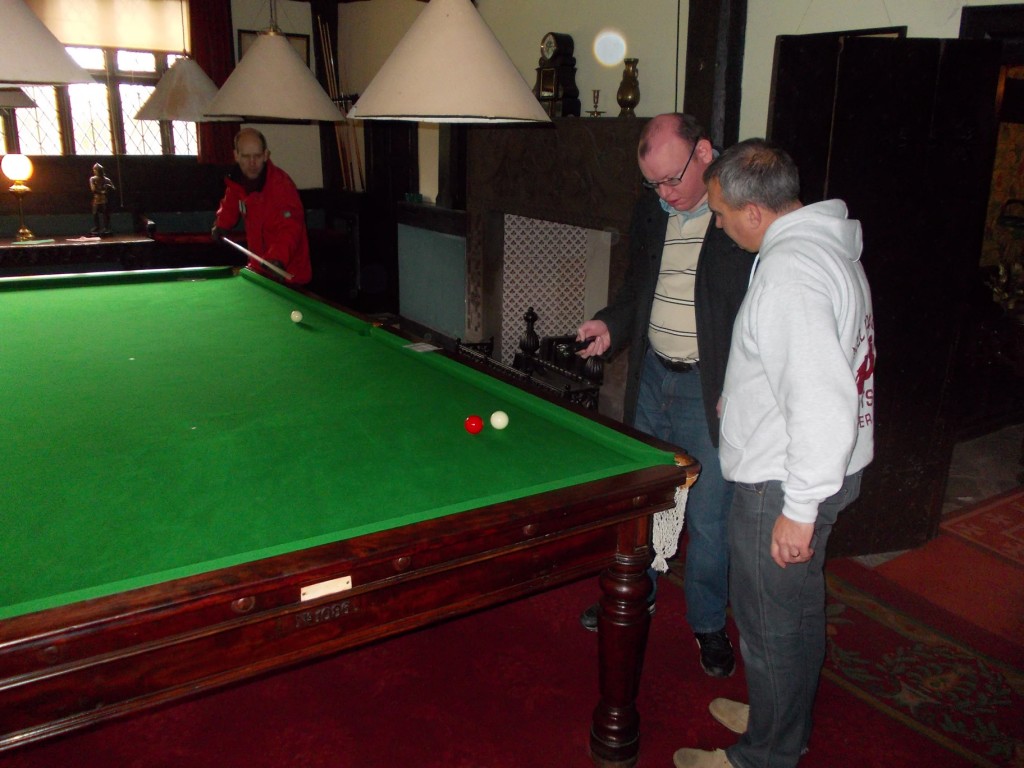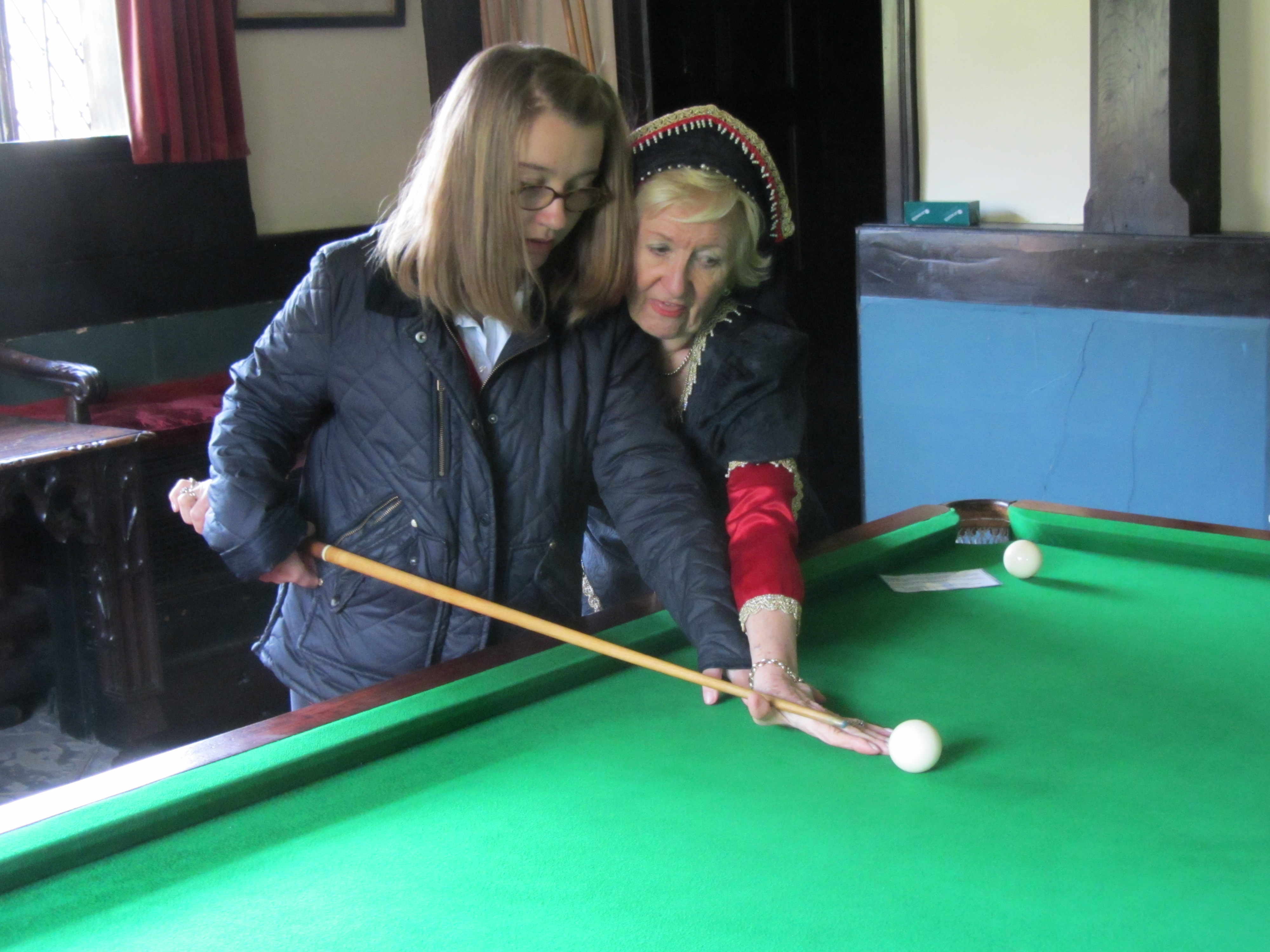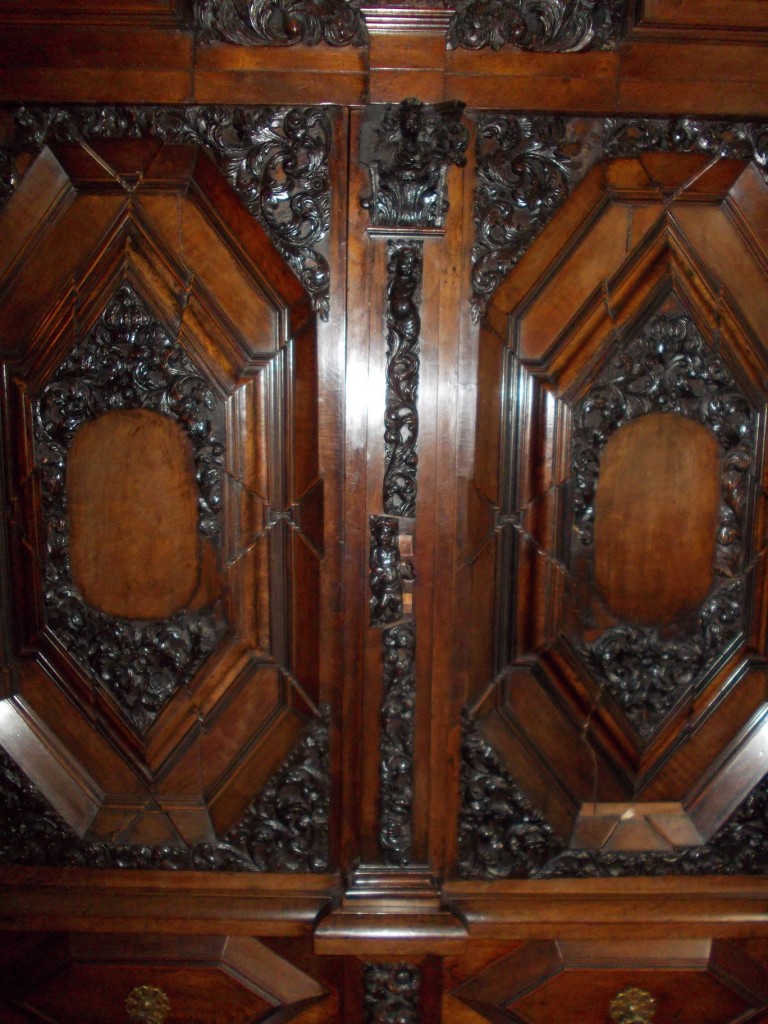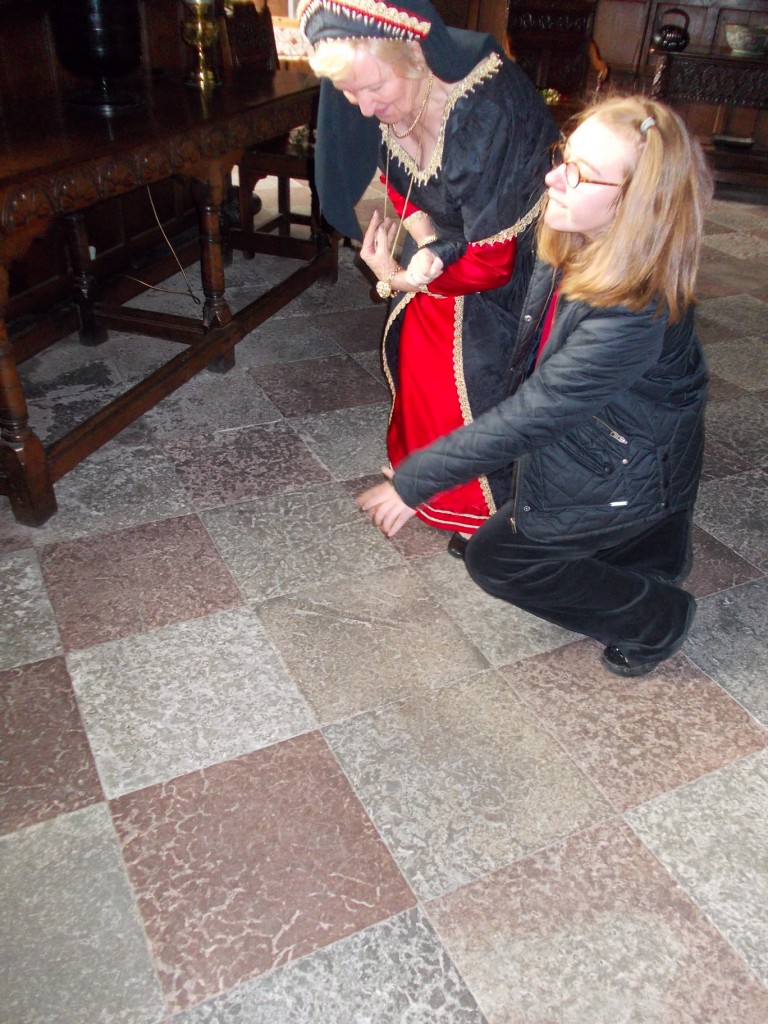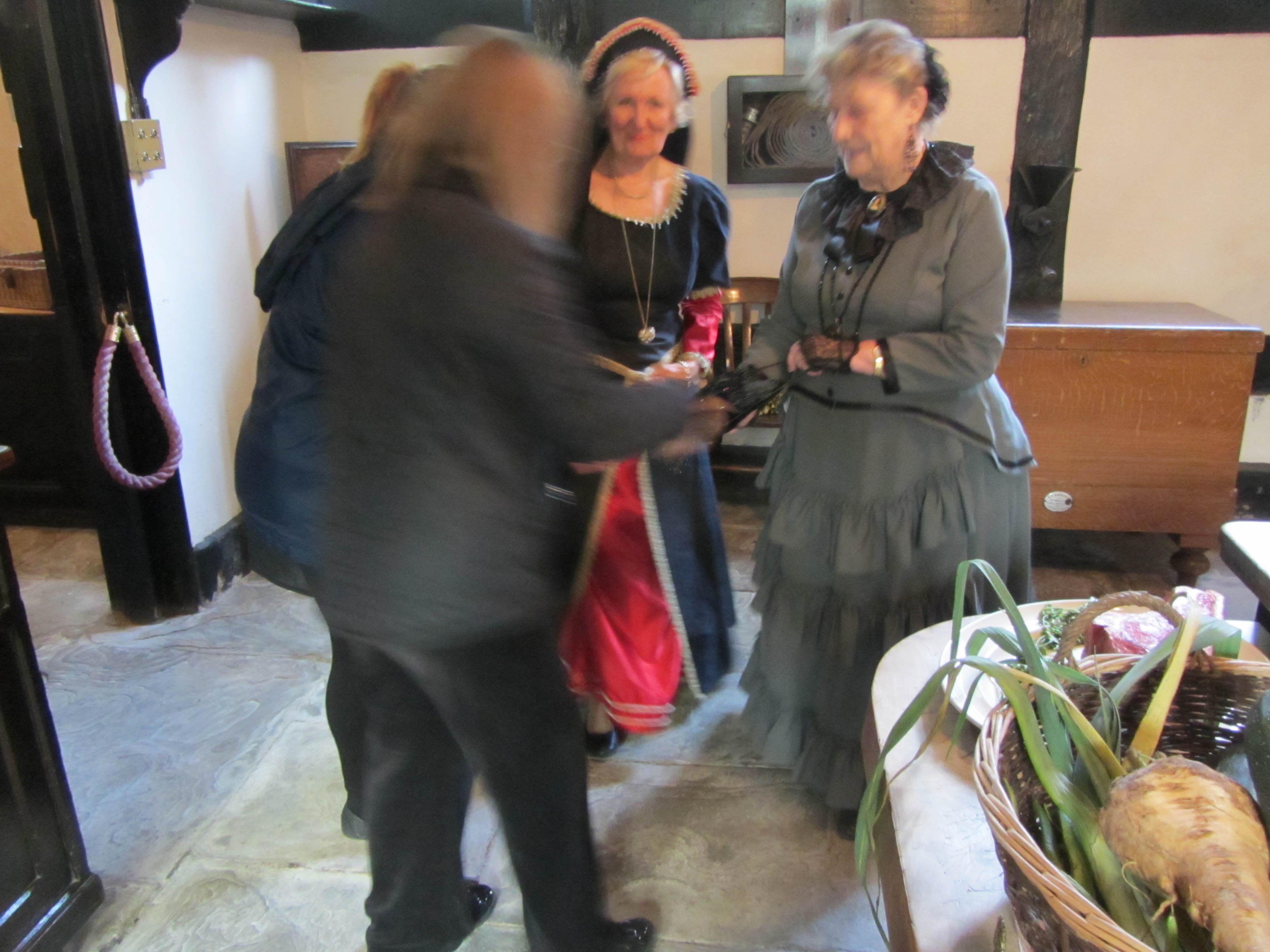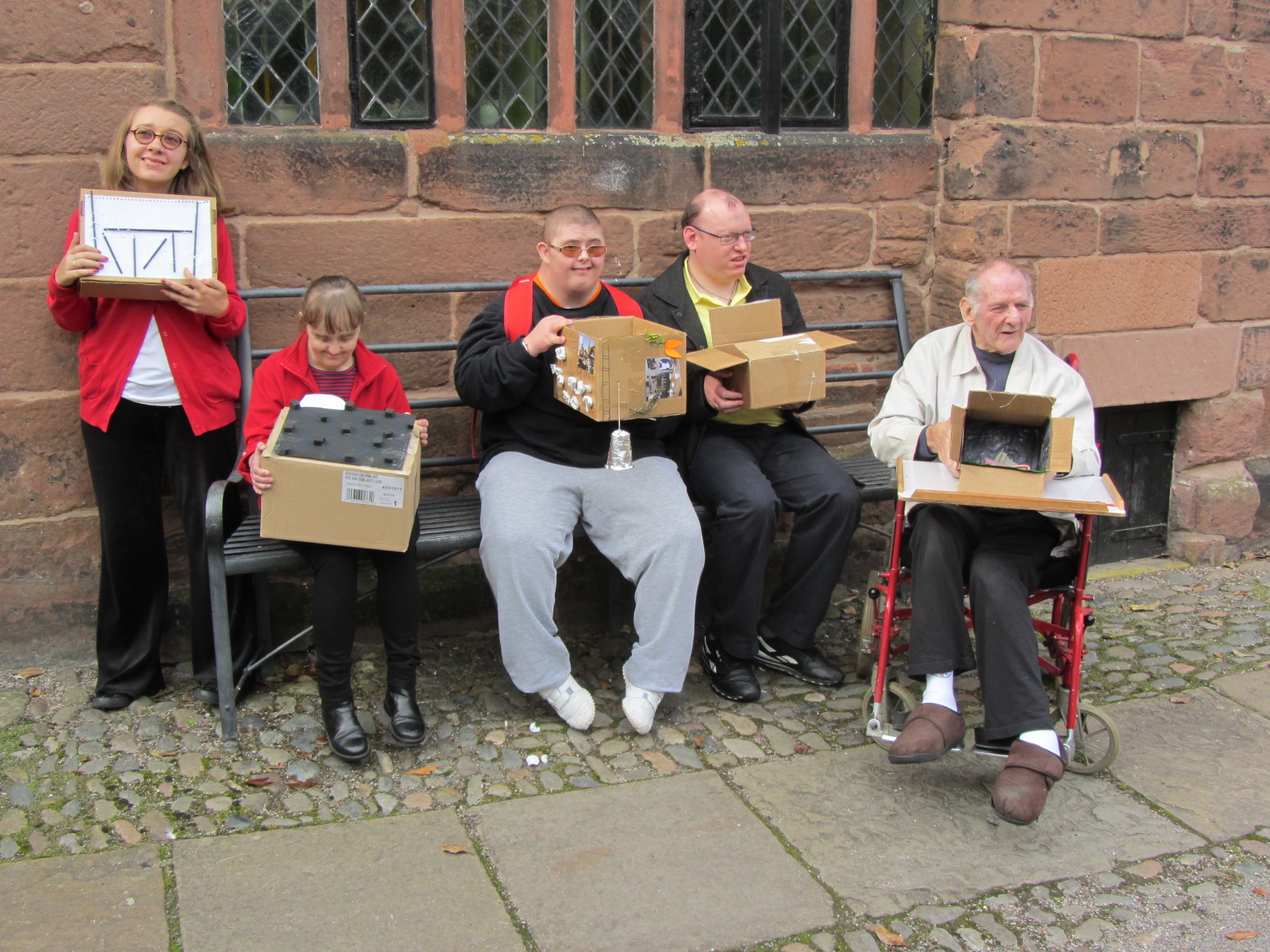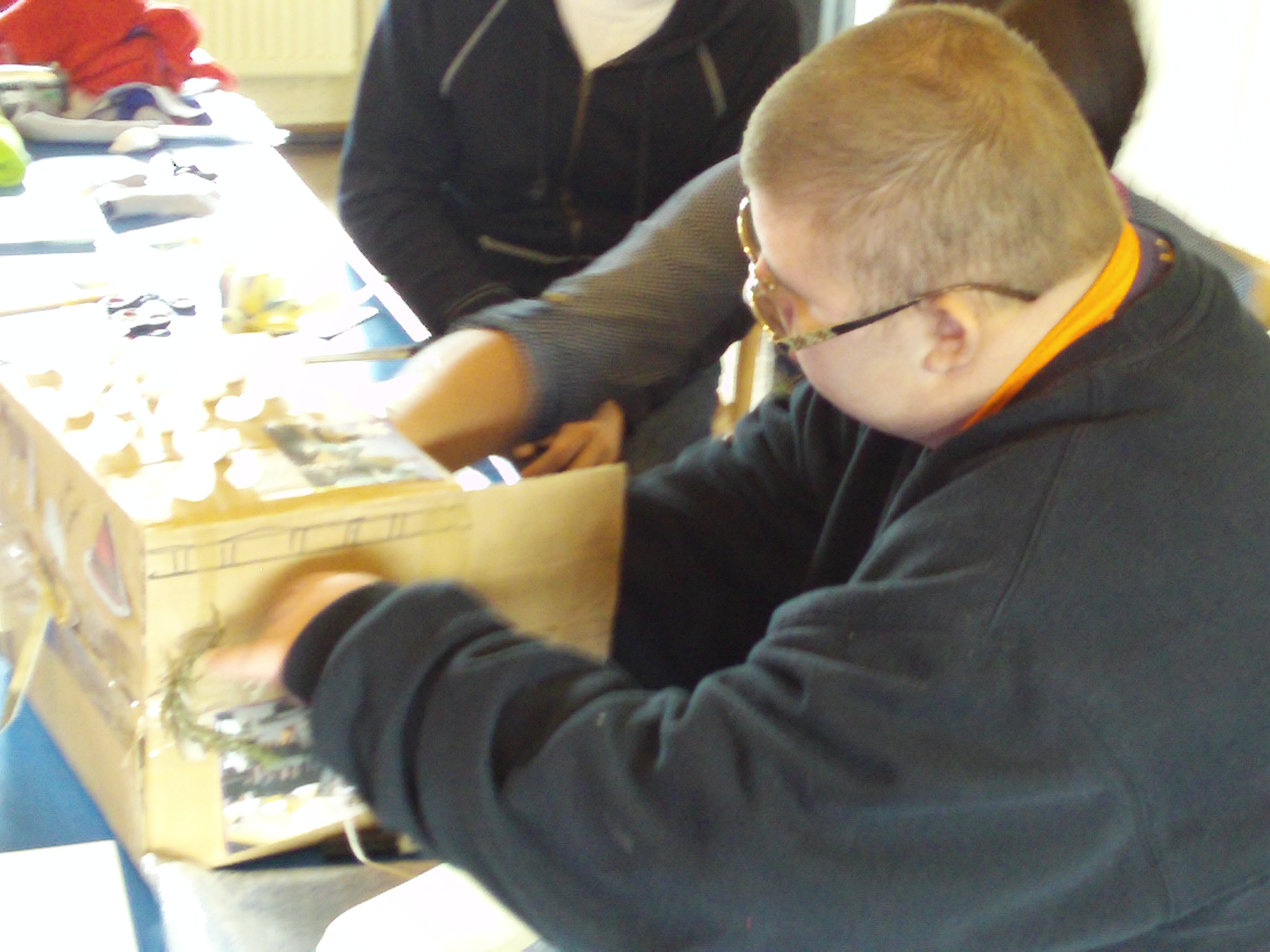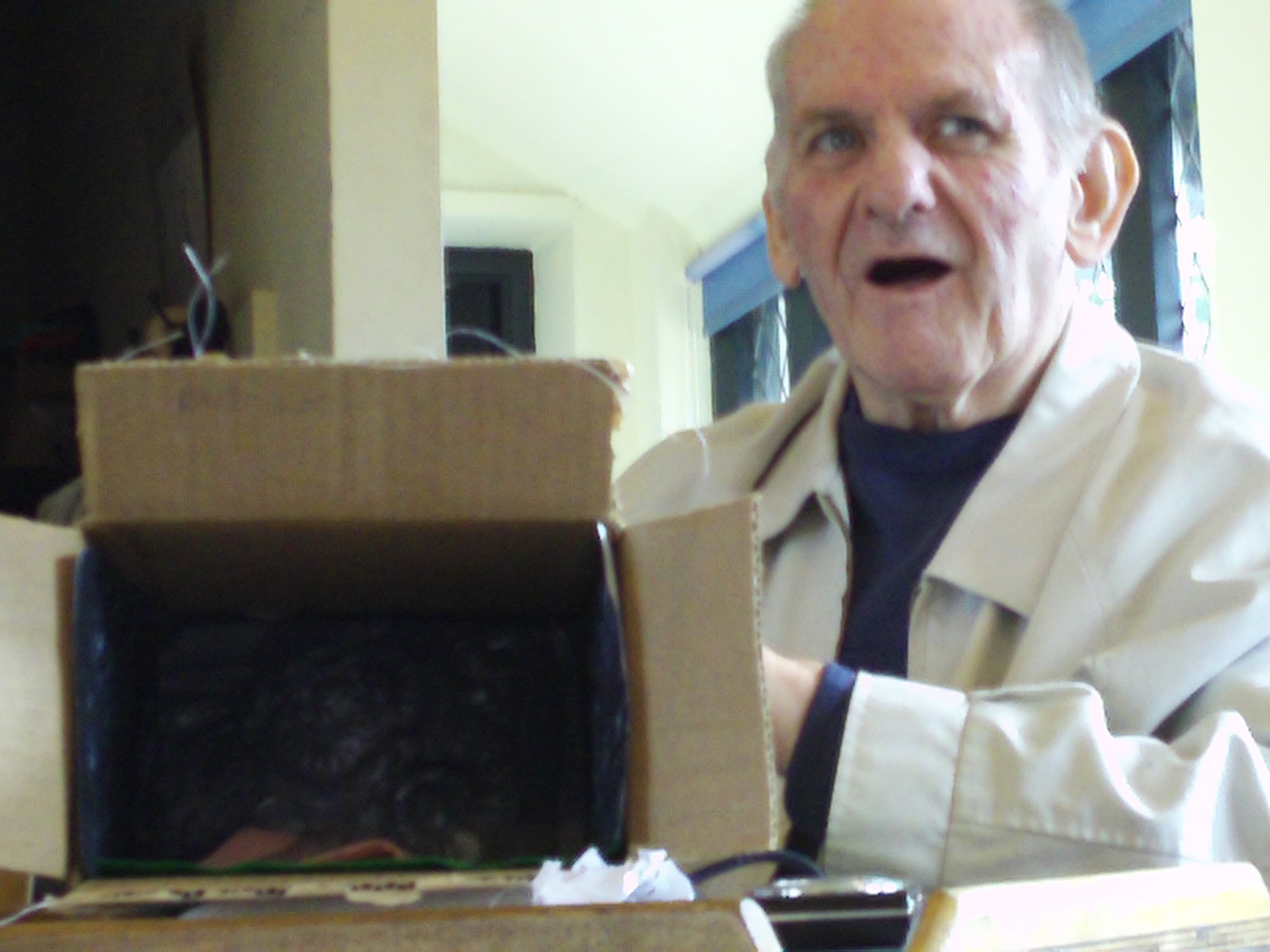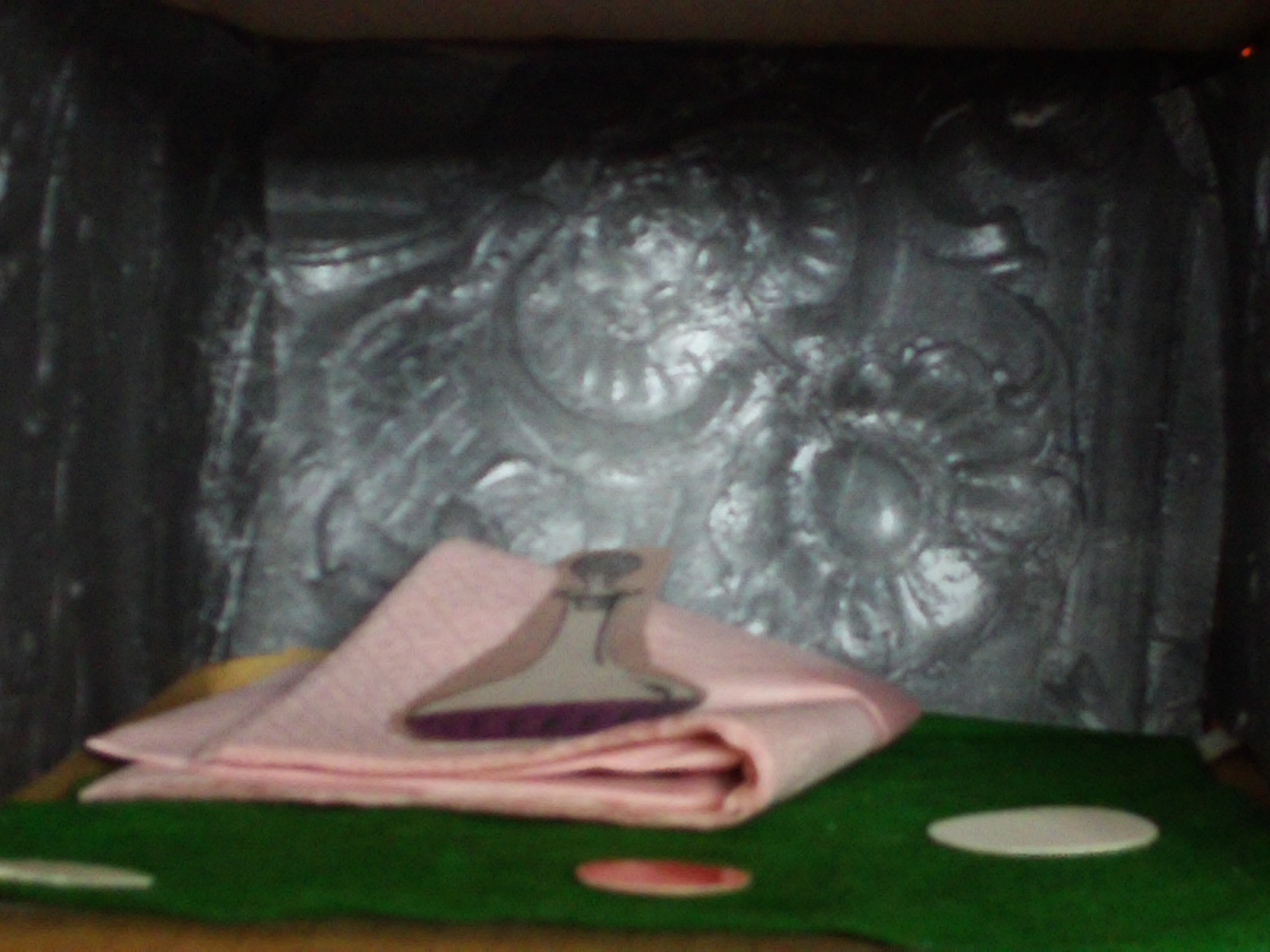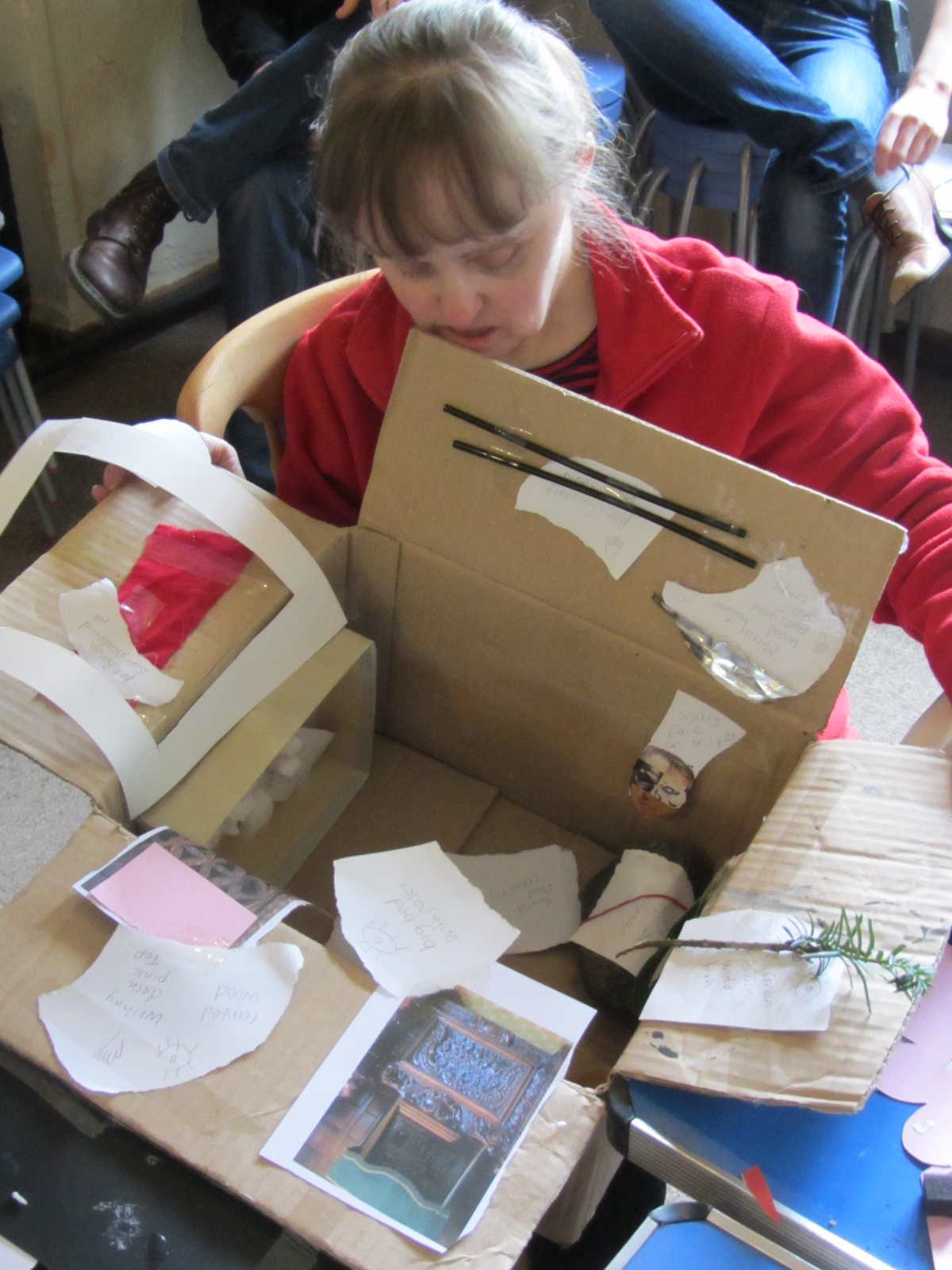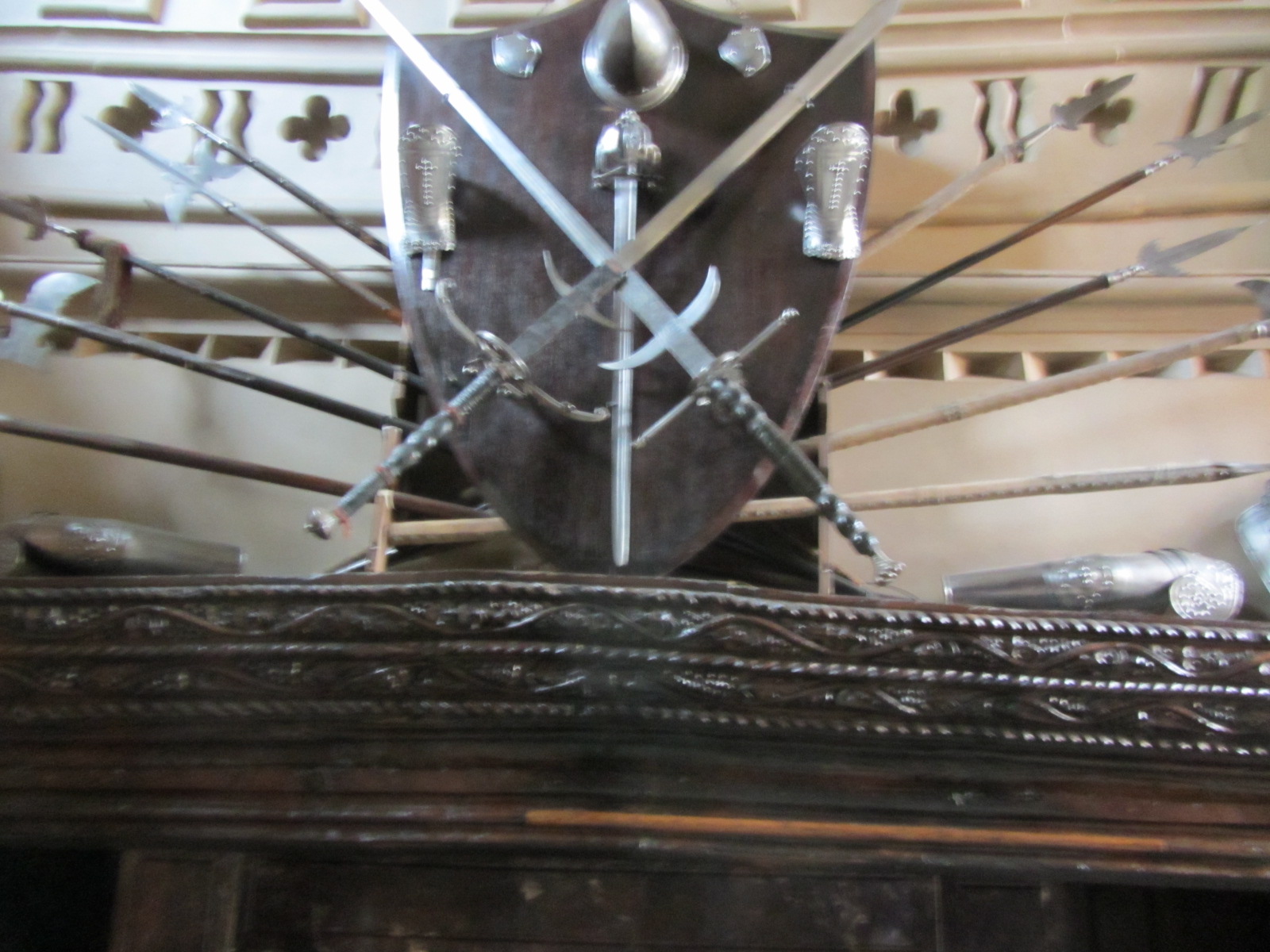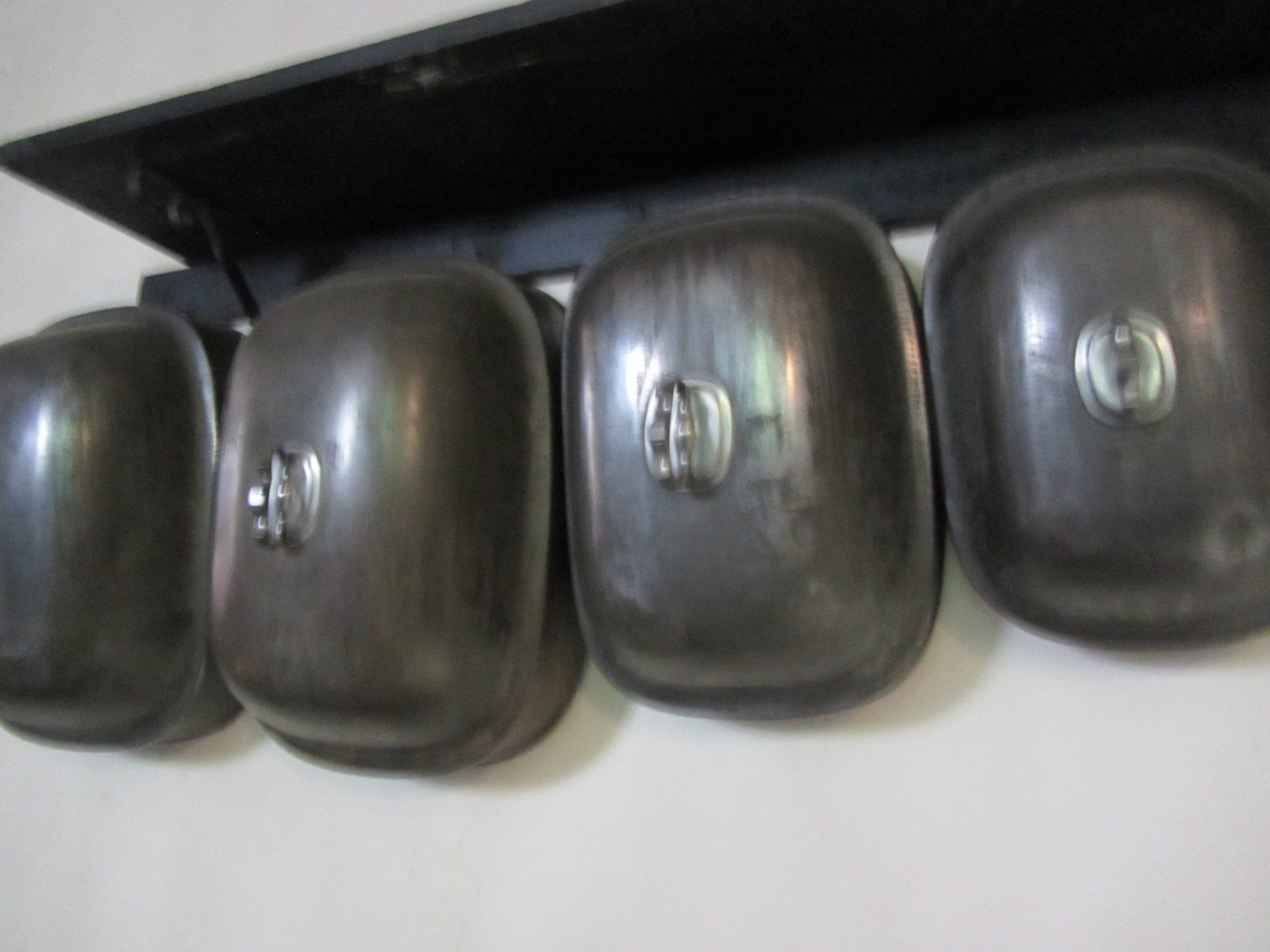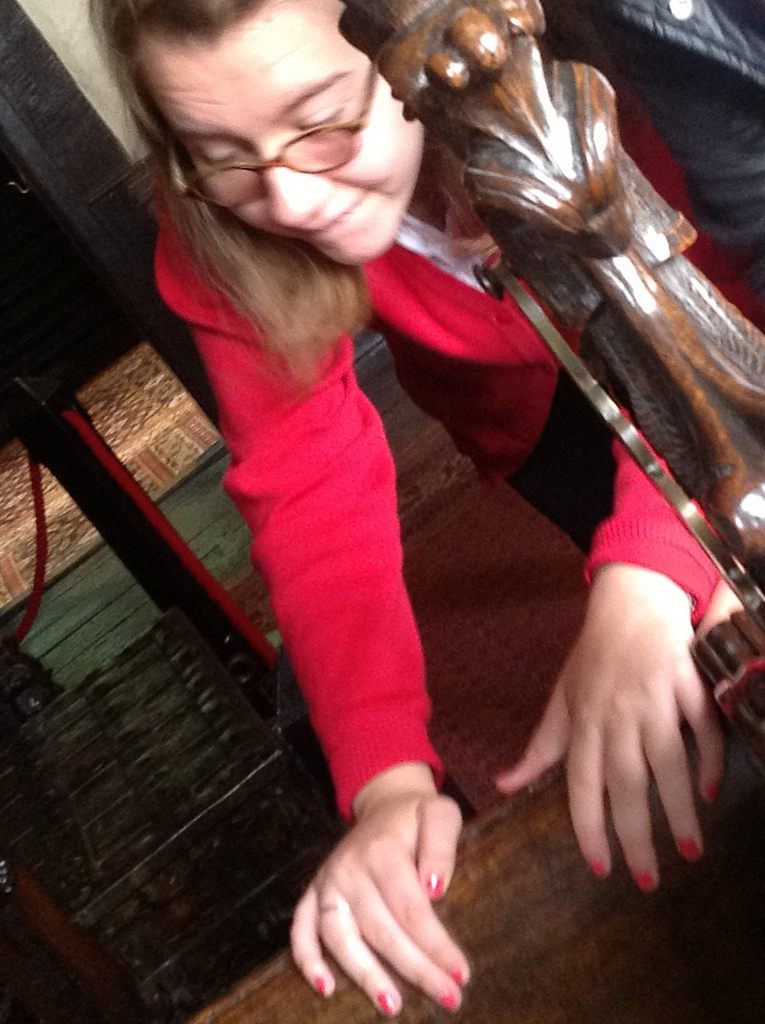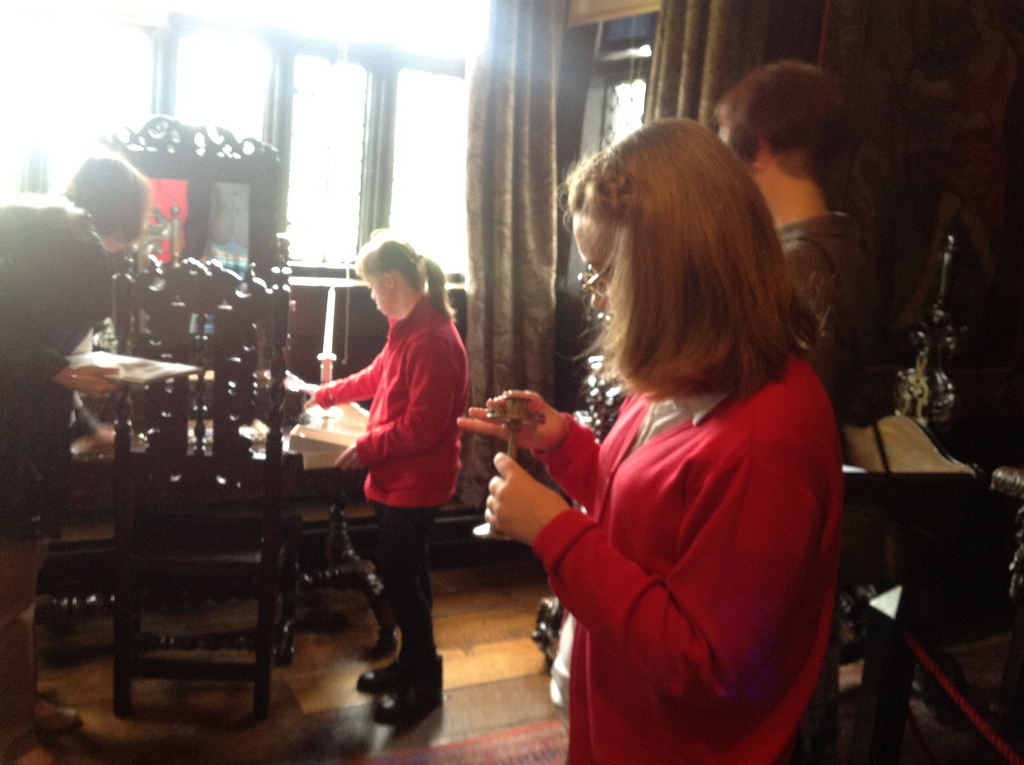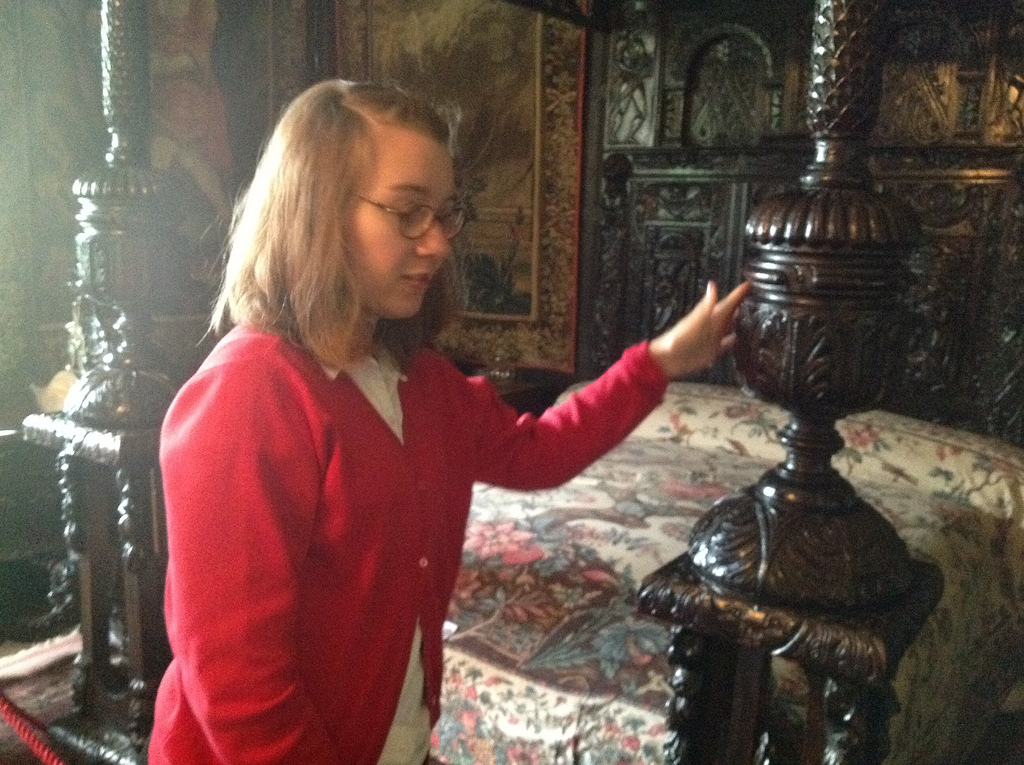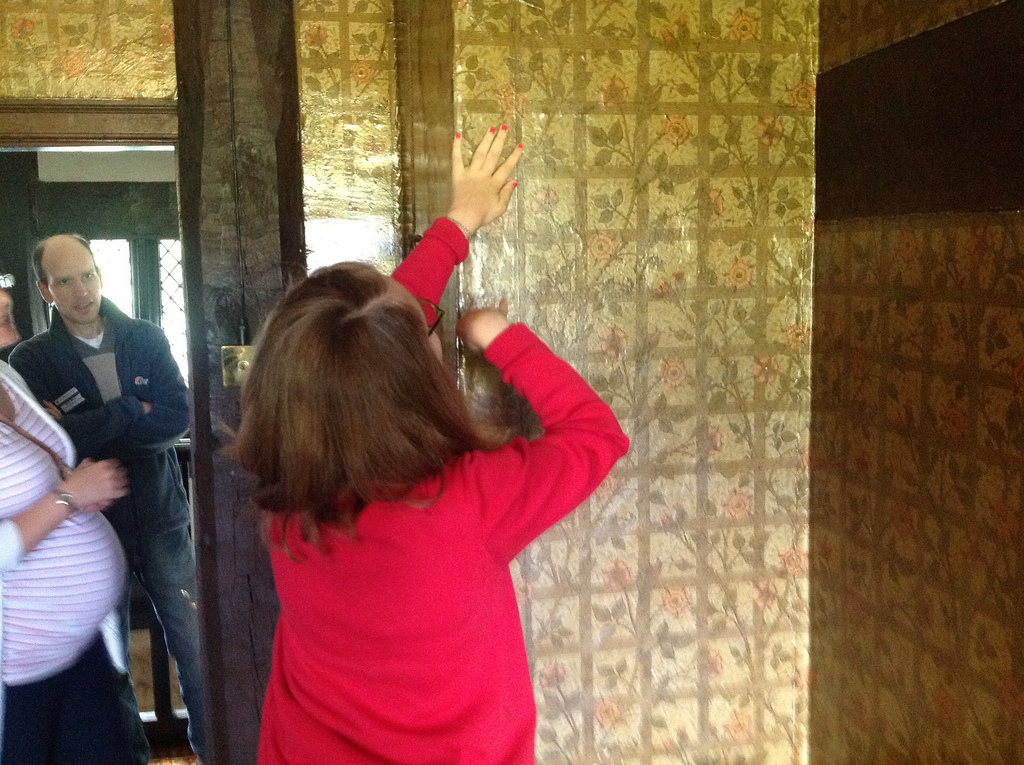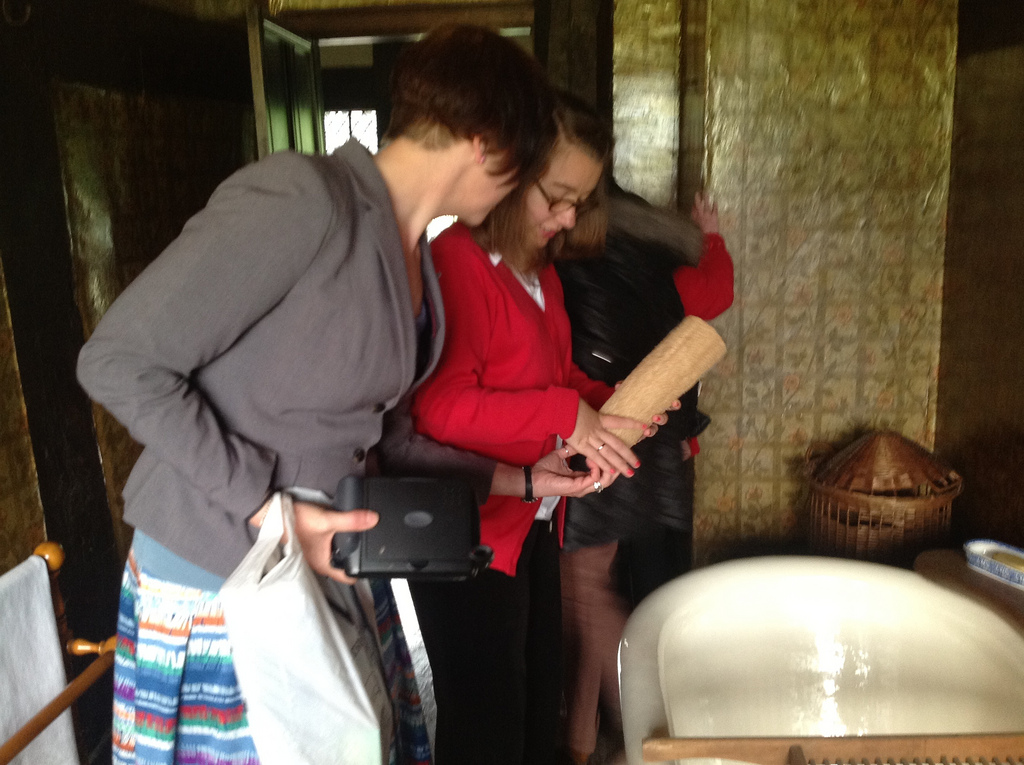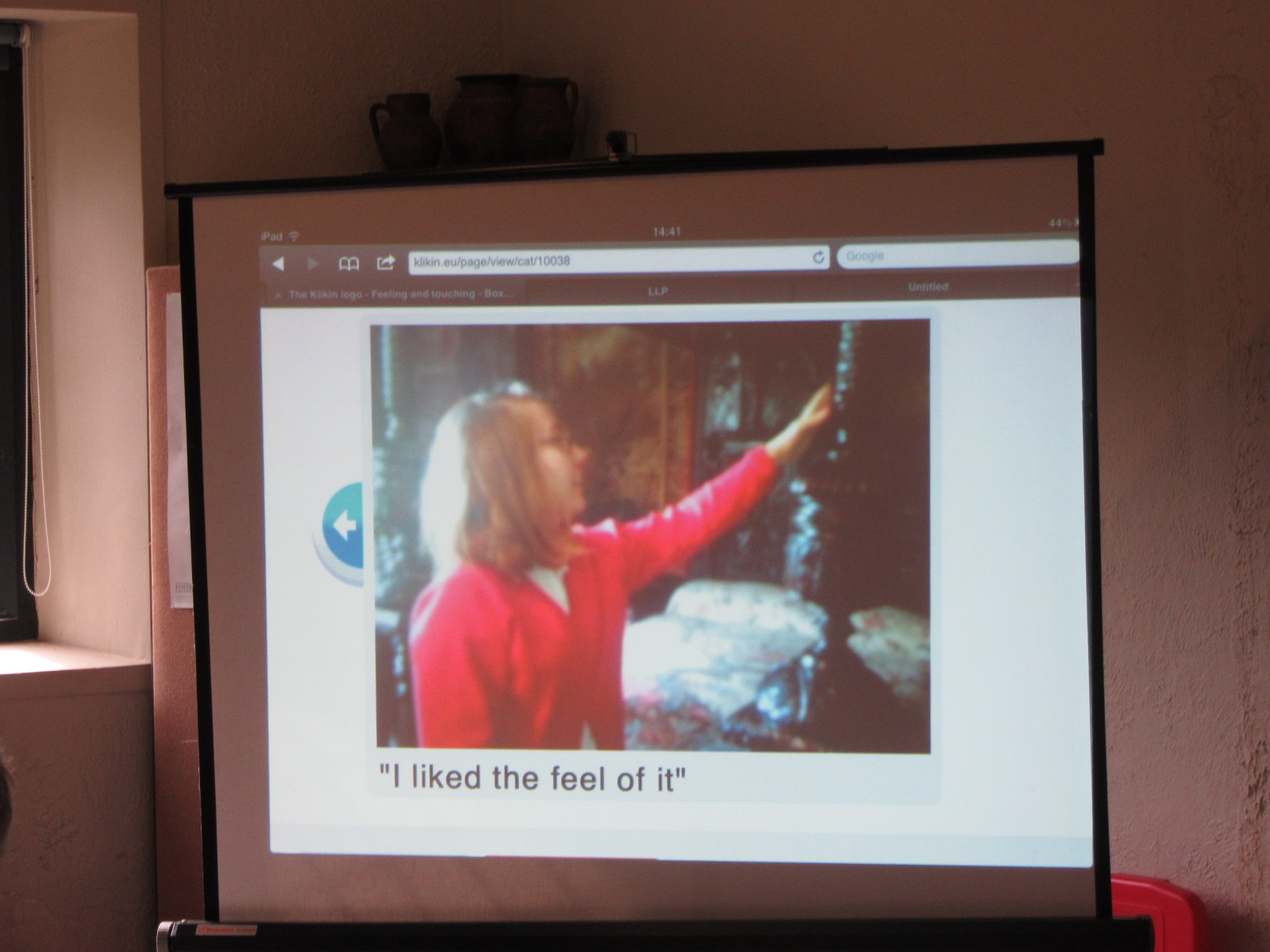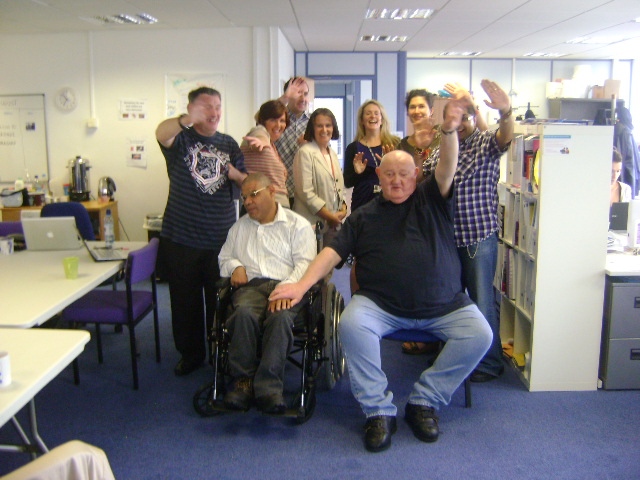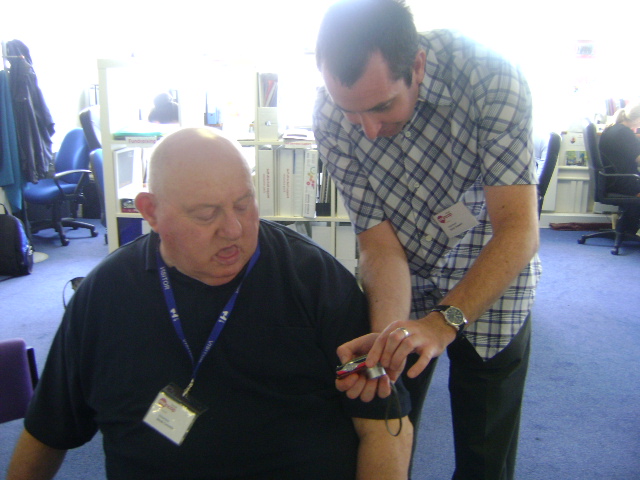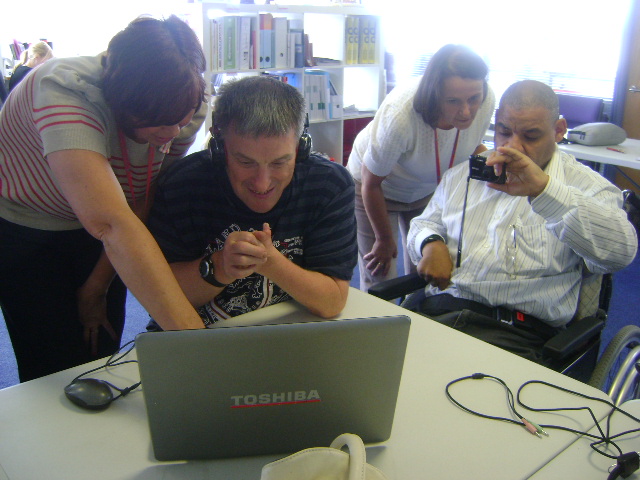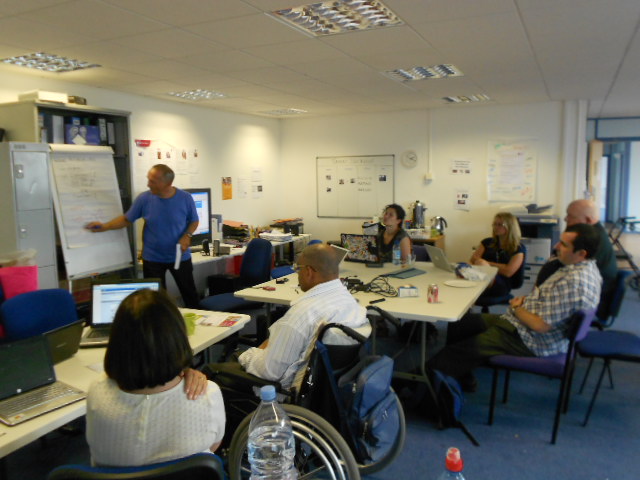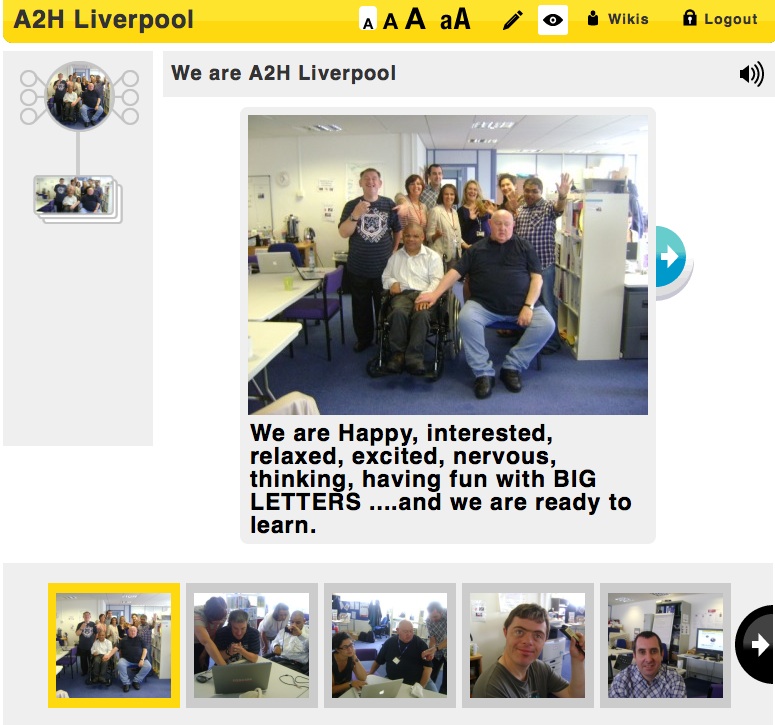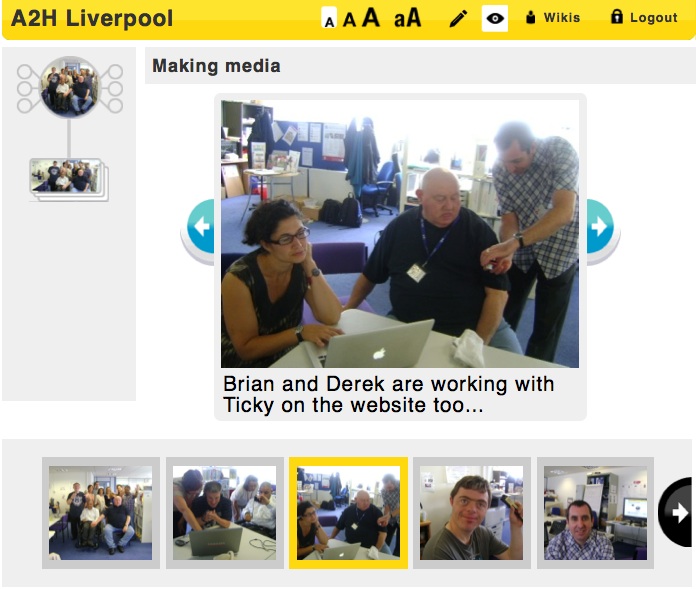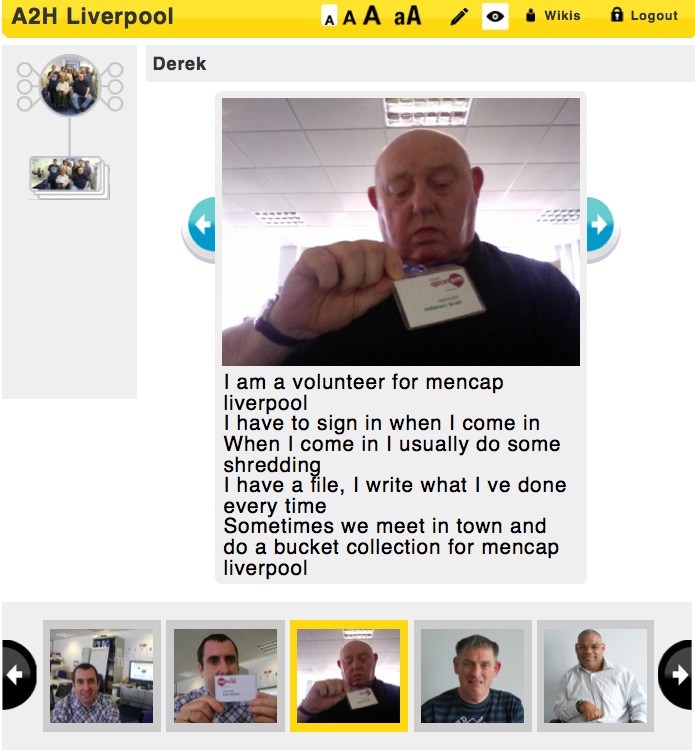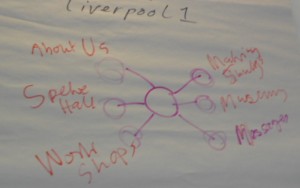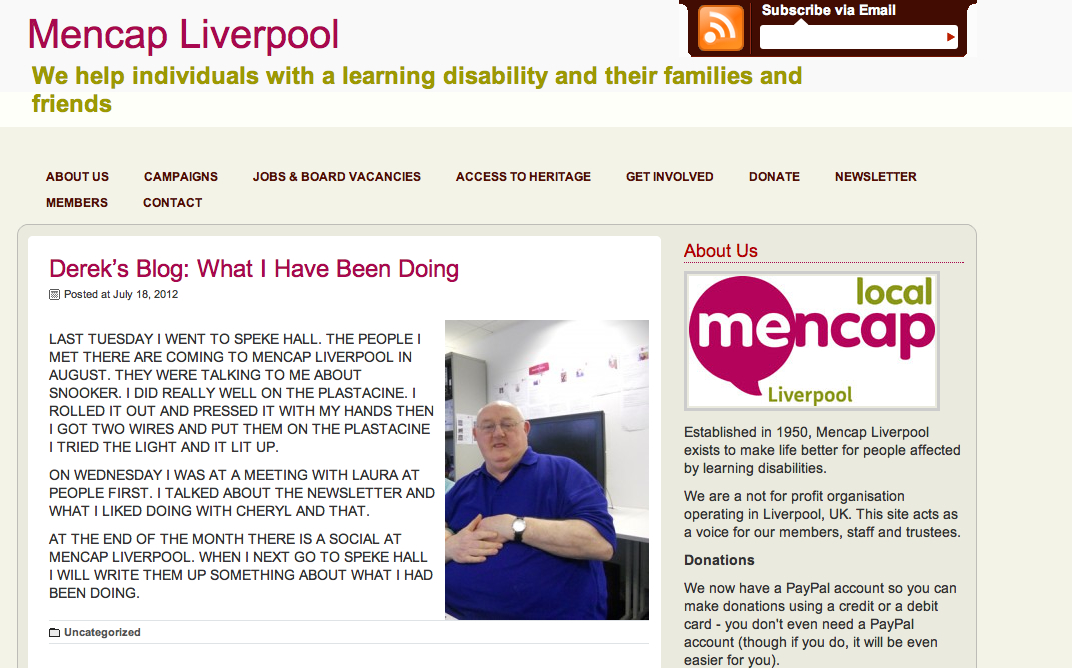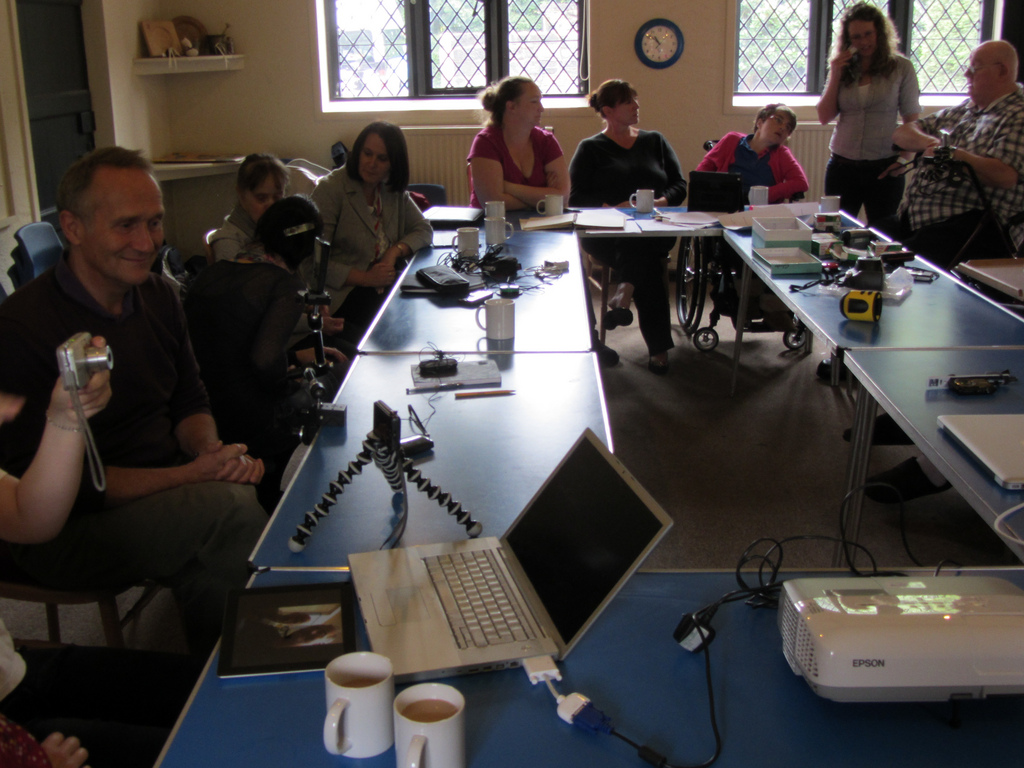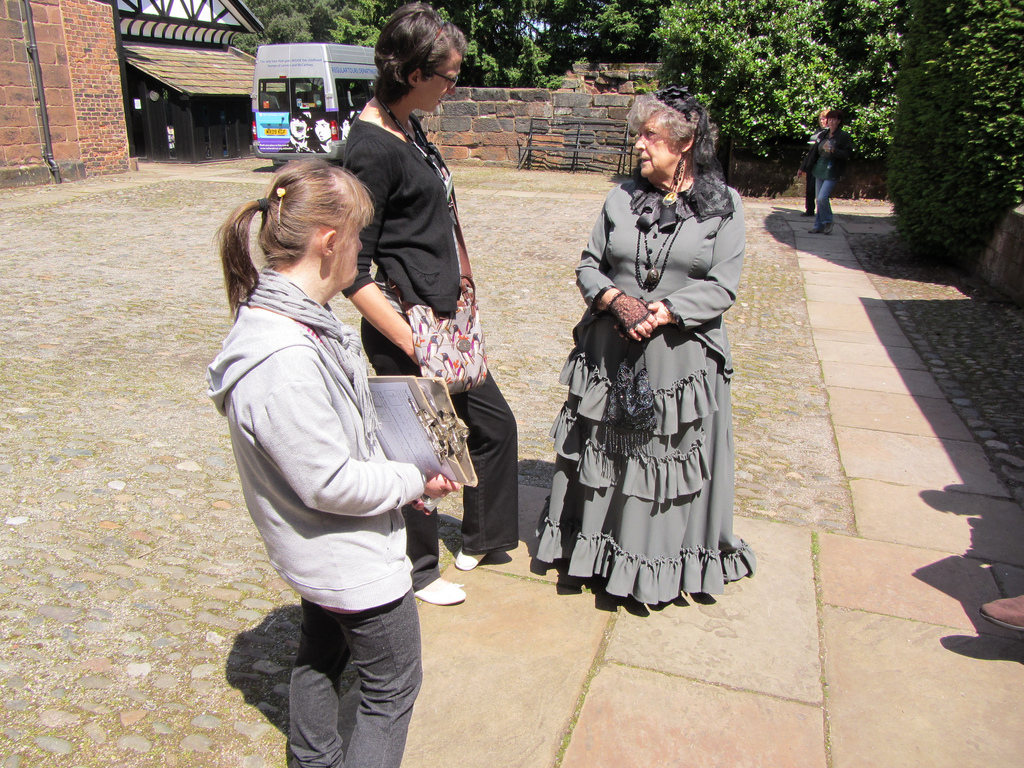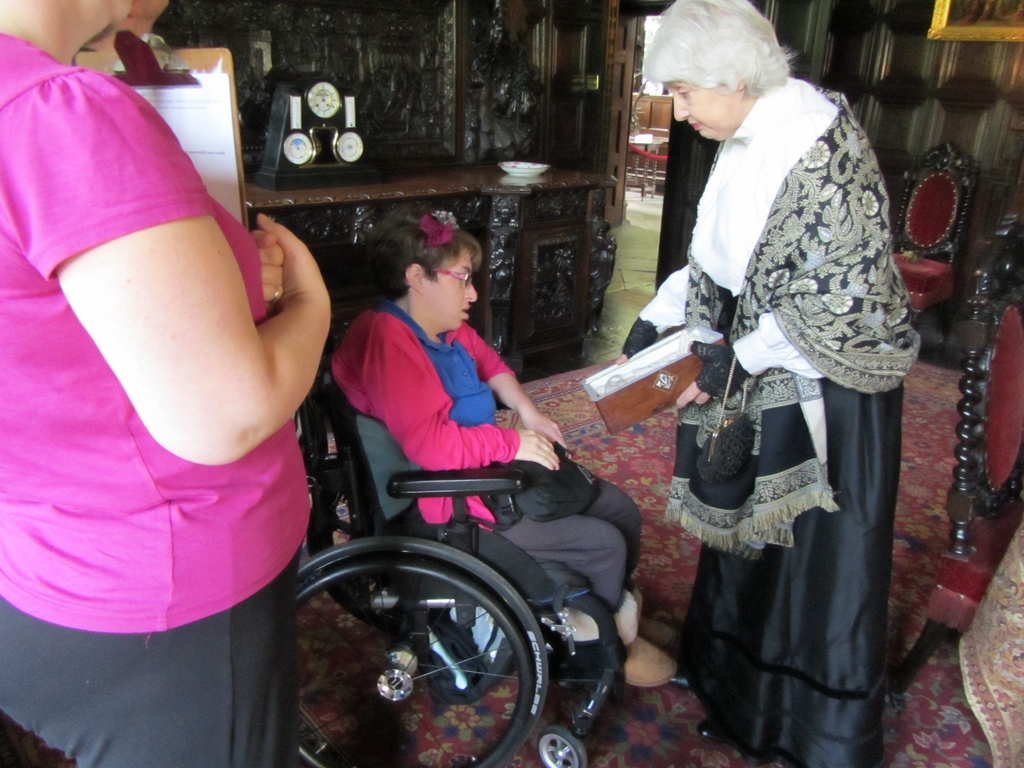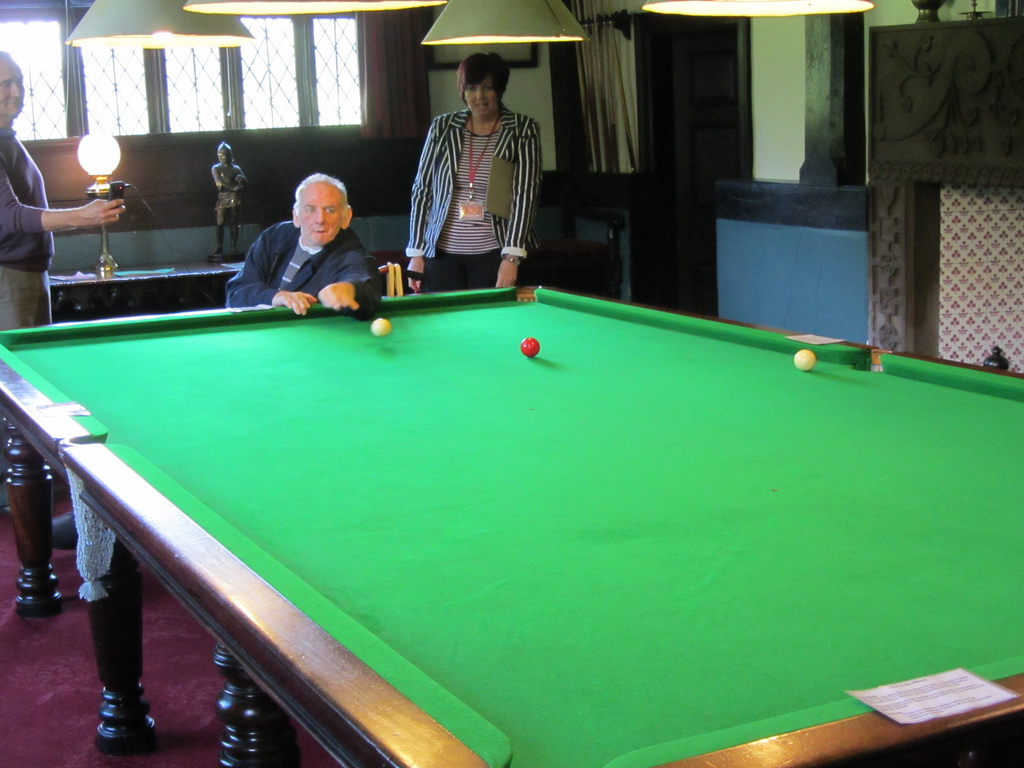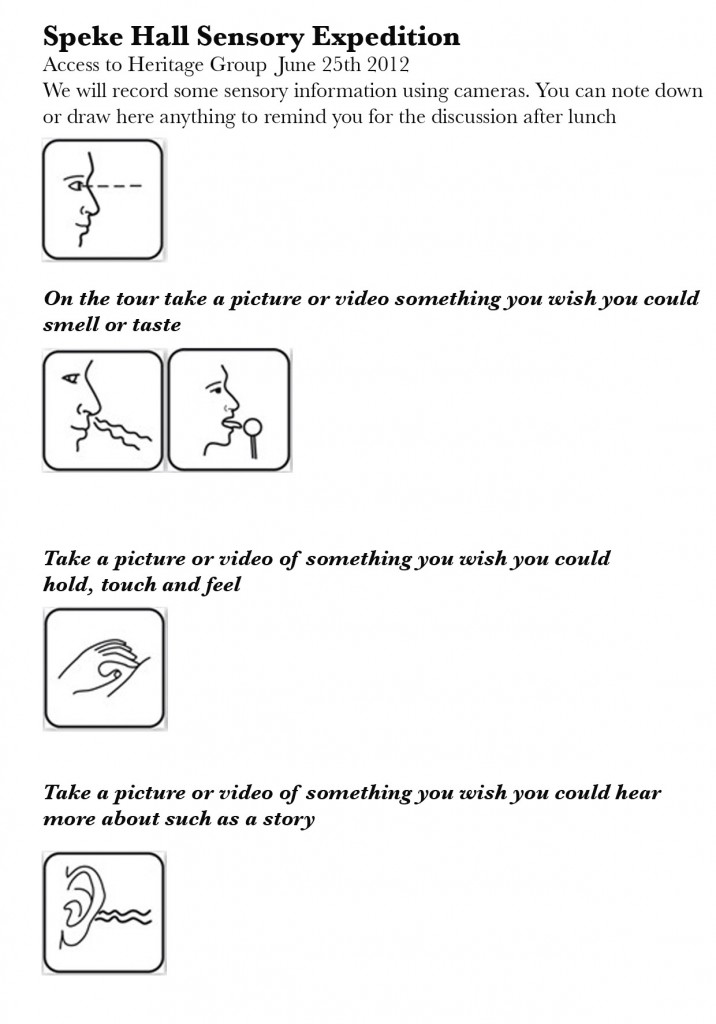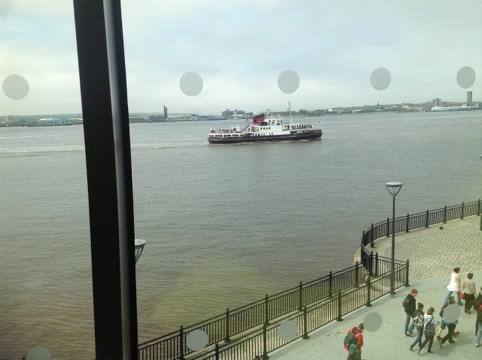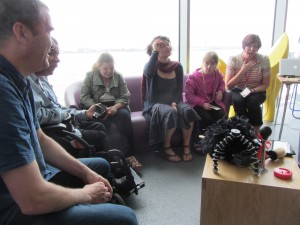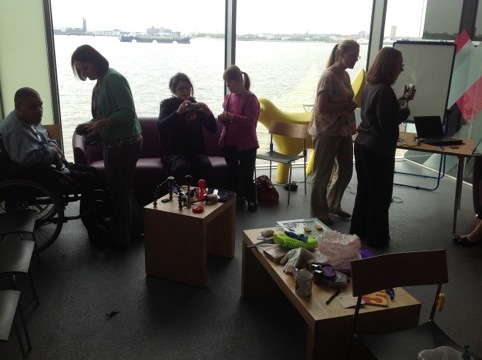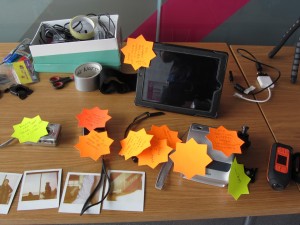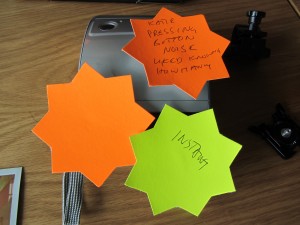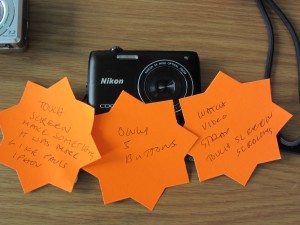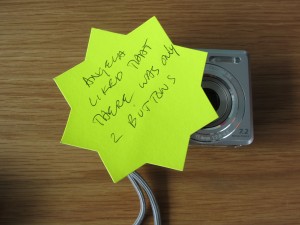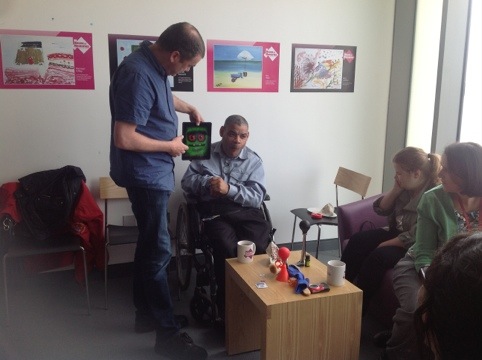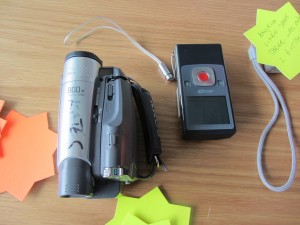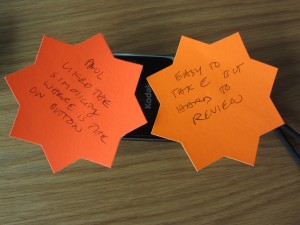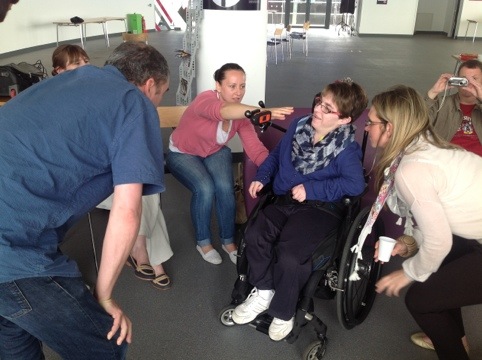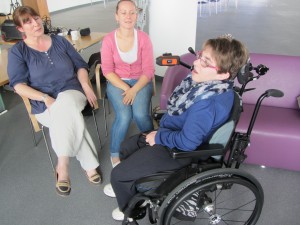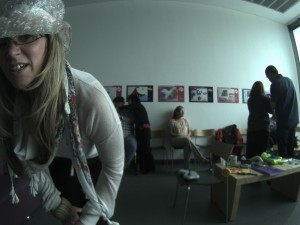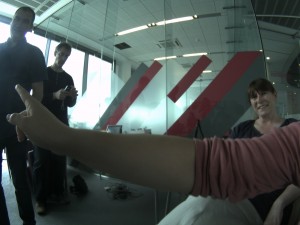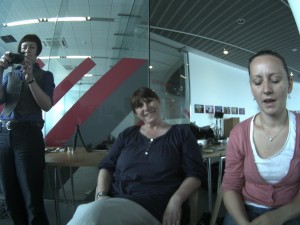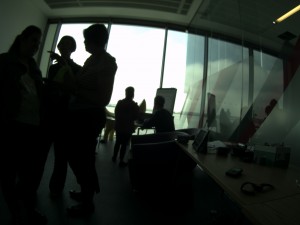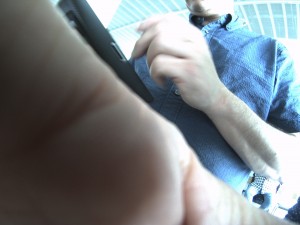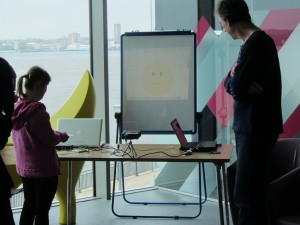Although making sensory boxes were planned during this session, we used the whole session to feedback about the book its self. It took longer than expected so we made some sensory boxes in our final session at Sudley, the pictures below show some of our Sudley House Boxes made during our final session.
Ticky wrote this report for us on the groups thoughts about the cookbook. We began by recapping on the previous session. We went around the group individually to share Objects made last week, iPad photos, Printed photos, to help them to remember and to share. In pairs – with support staff and service users we looked at the whole of the cookbook.Feed back was filmed and some notes were written in the books. Some really useful comments and suggestions came out of this session.
- The name is misleading
- It would be good to have the whole section about one activity in one place instead of separated with appendices
- It would be good to have a list of things you need for the activity with the cartoon
- A session planning template would be useful for support staff
- A filled in version as an example would show supporters what kind of thing to write
(We made a template for support staff as part of the Hands On training – but we think it could do with being reformatted as it looks too much like a form and some staff find that off putting.)
- A blank page for notes would also be useful
- J&G have been adding a starting activity (ice breaker) and a feed back session at the end and this could be worth suggesting in the book if it is to be used by support staff.
- Who is the intended audience for the book? Casual visitors? Venue staff? Support staff, service users all?
- It could be used by groups visiting if they were handed a sheet on arrival to help them focus their visit on a sense?
- Or for a 6 week block visit
- Could be a really useful tool for support staff to plan activities at the base through the senses over several weeks – for example a group have South America as their topic and could choose to have a food focus then music……
- Suggested that it could be less linked to a house and made more general
- Produced as a durable book as it would get a lot of use and handling
- Asked about web resources they didn’t think it would work as staff in day centres are not given the time to go on line and down load plans
- And they would be unlikely to up load their photos, films sound clips, comments for same reason.
- Unless it was incorporated into the session
Other comments on book
- Simple symbols possibly in colour and quite big needed for the senses to be used where ever there are titles smell touch etc introduced in the contents page where it can be explained if necessary then recognised elsewhere.
- Symbols Used in place of the photos which are too ambiguous in contents and else where (although lovely for the group as they are in them)
- Most of the cartoons are brilliant and are an excellent way to engage with the book for people with learning disabilities.
- Some pictures are confusing and misleading – microphone mistaken for an ice cream – mouse confuses people – smell pictures are hard to read – texture is most unclear and needs rethinking – possibly using real pictures?
- The questionnaire is not made for people with learning disabilities
- If you want their comments need more work on this – yes/no answers smiley face sad face.
- Pictures
- Some comments written in books directly which I will send to you along with the films of people feeding back.



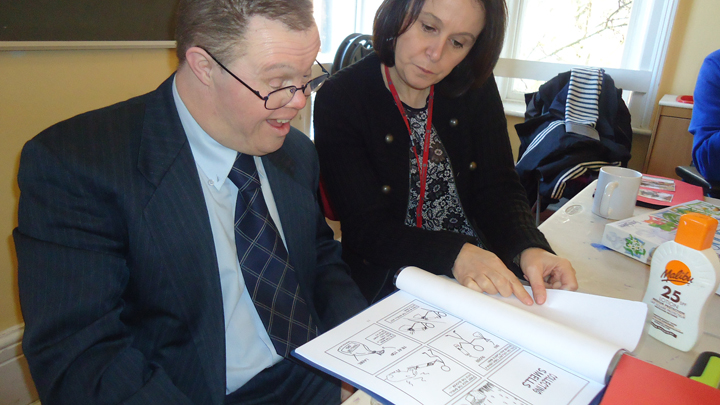

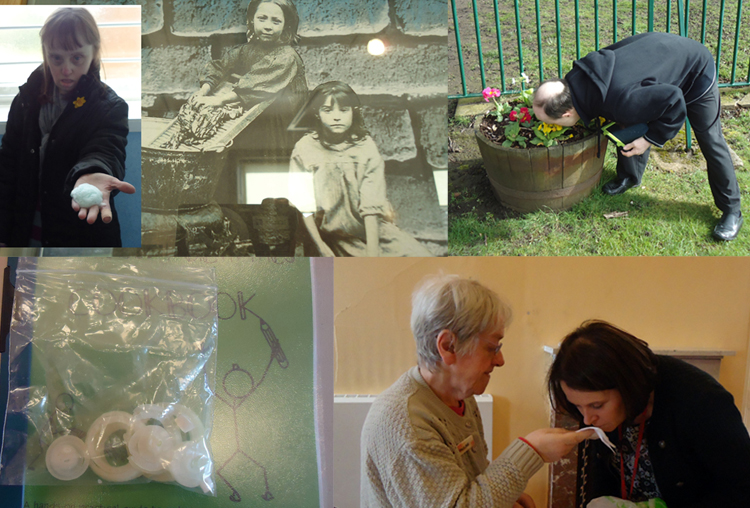

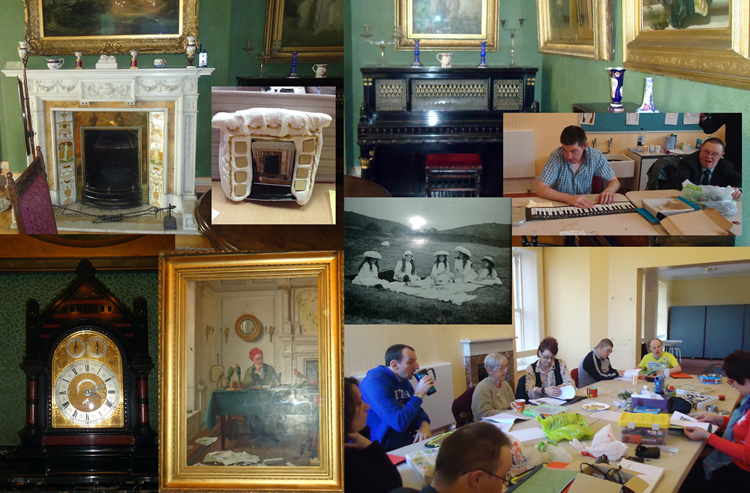
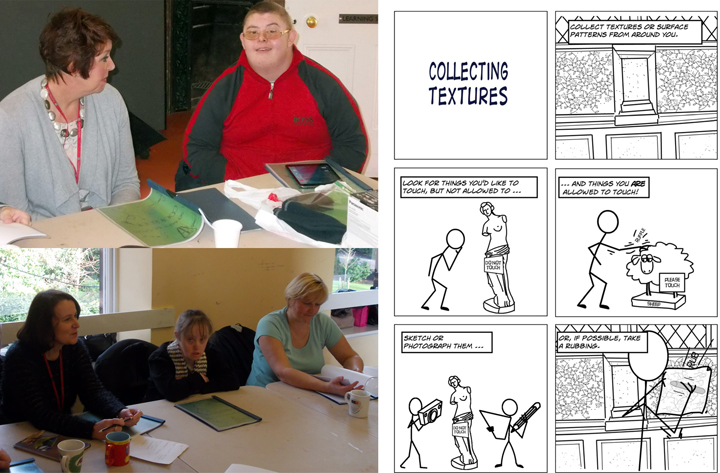
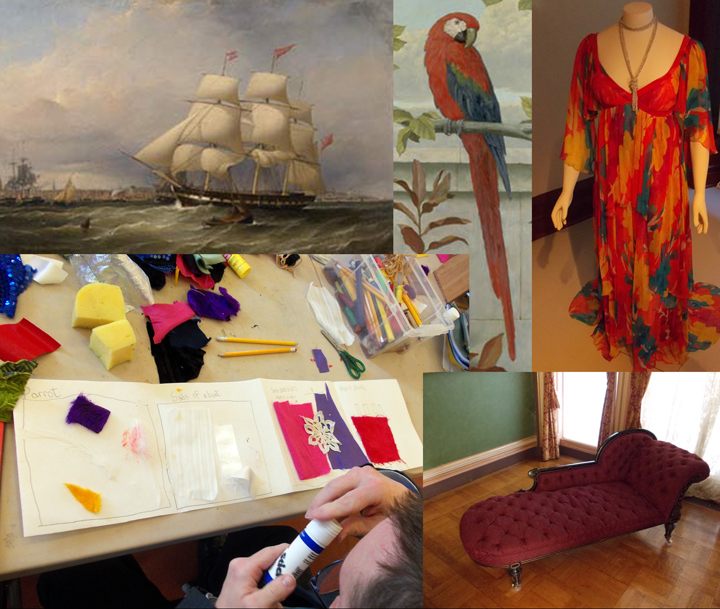


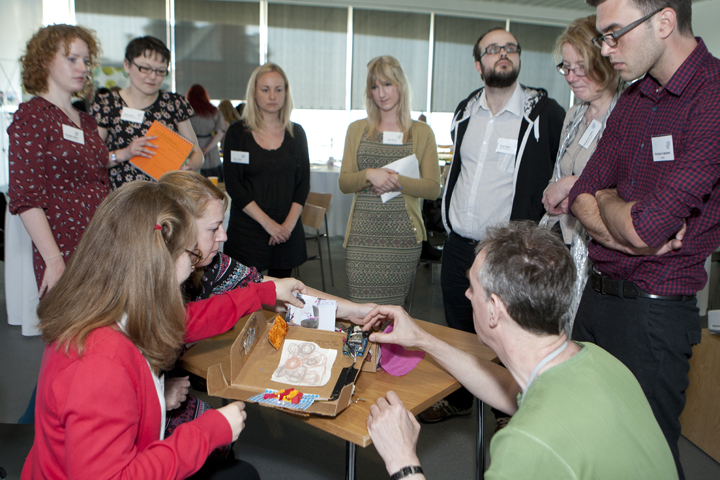
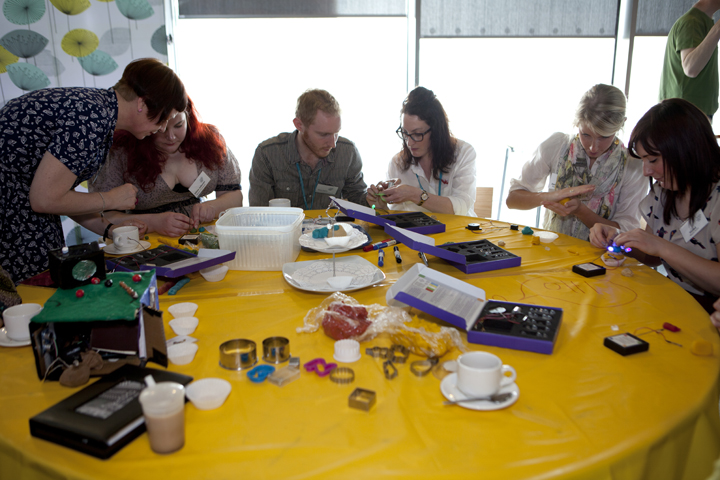
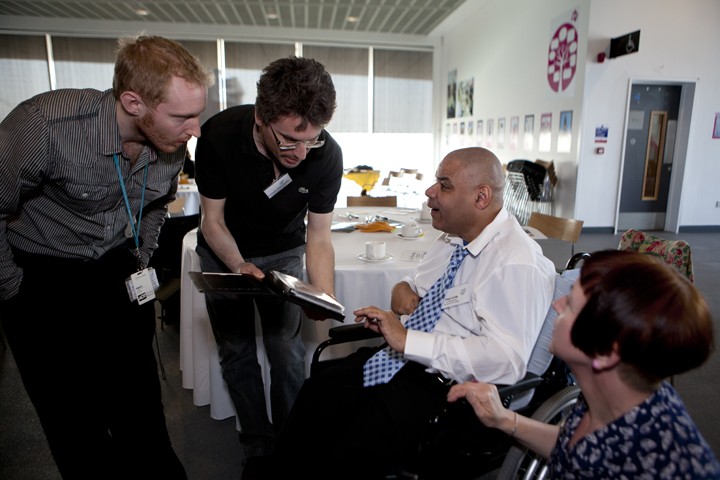
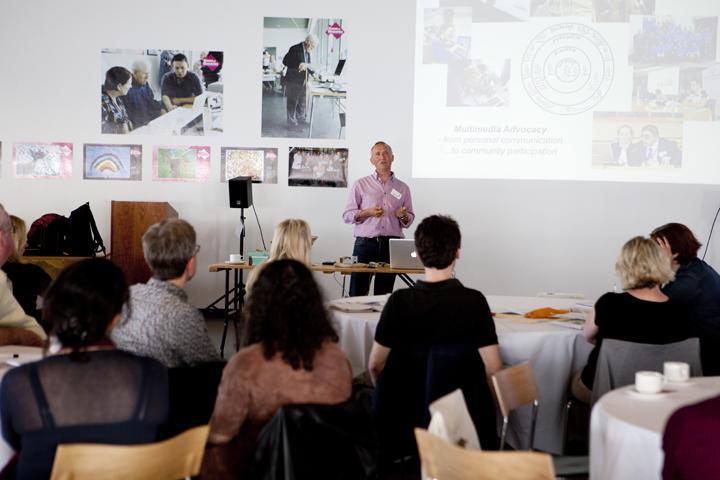
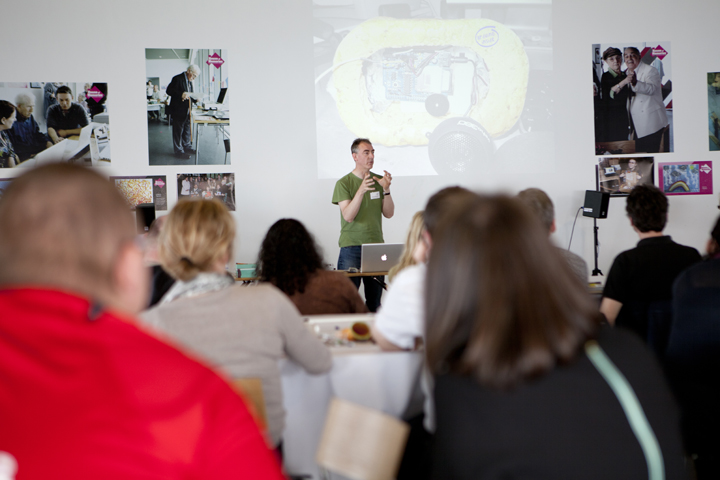

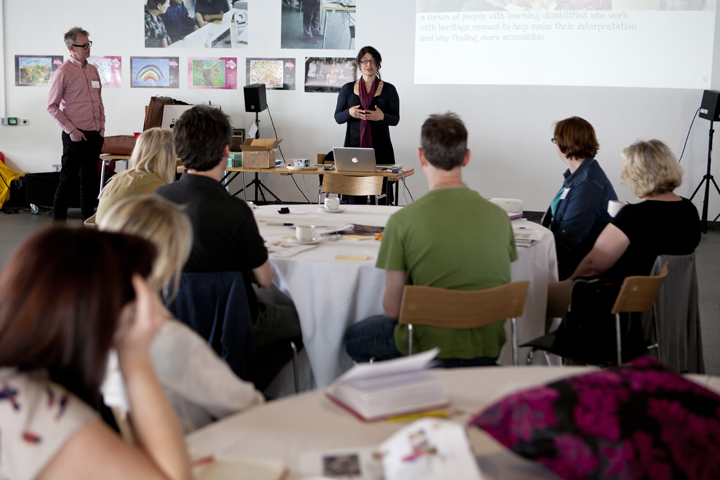
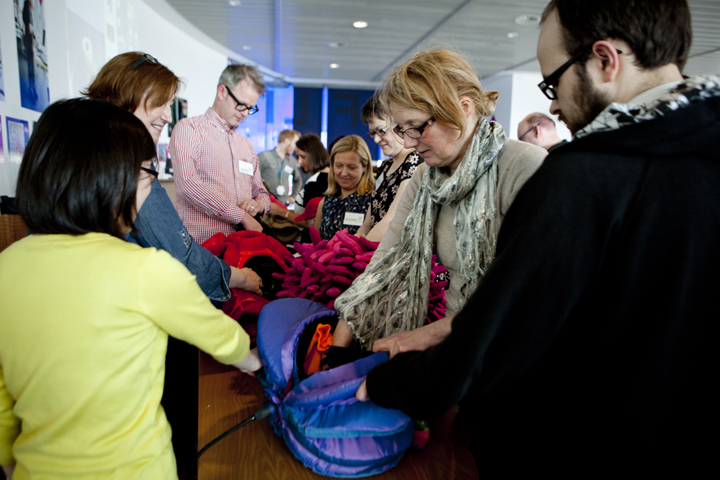
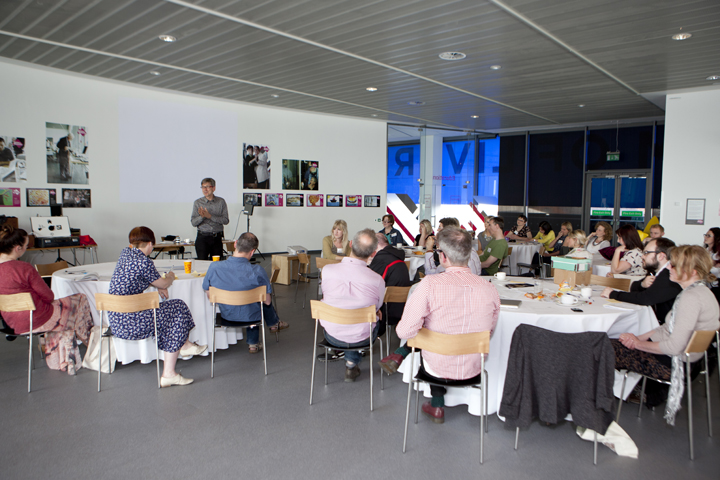



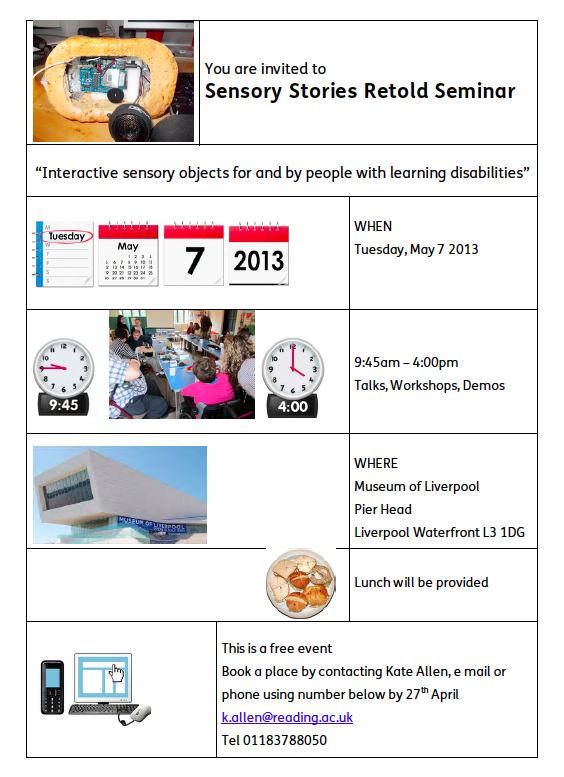
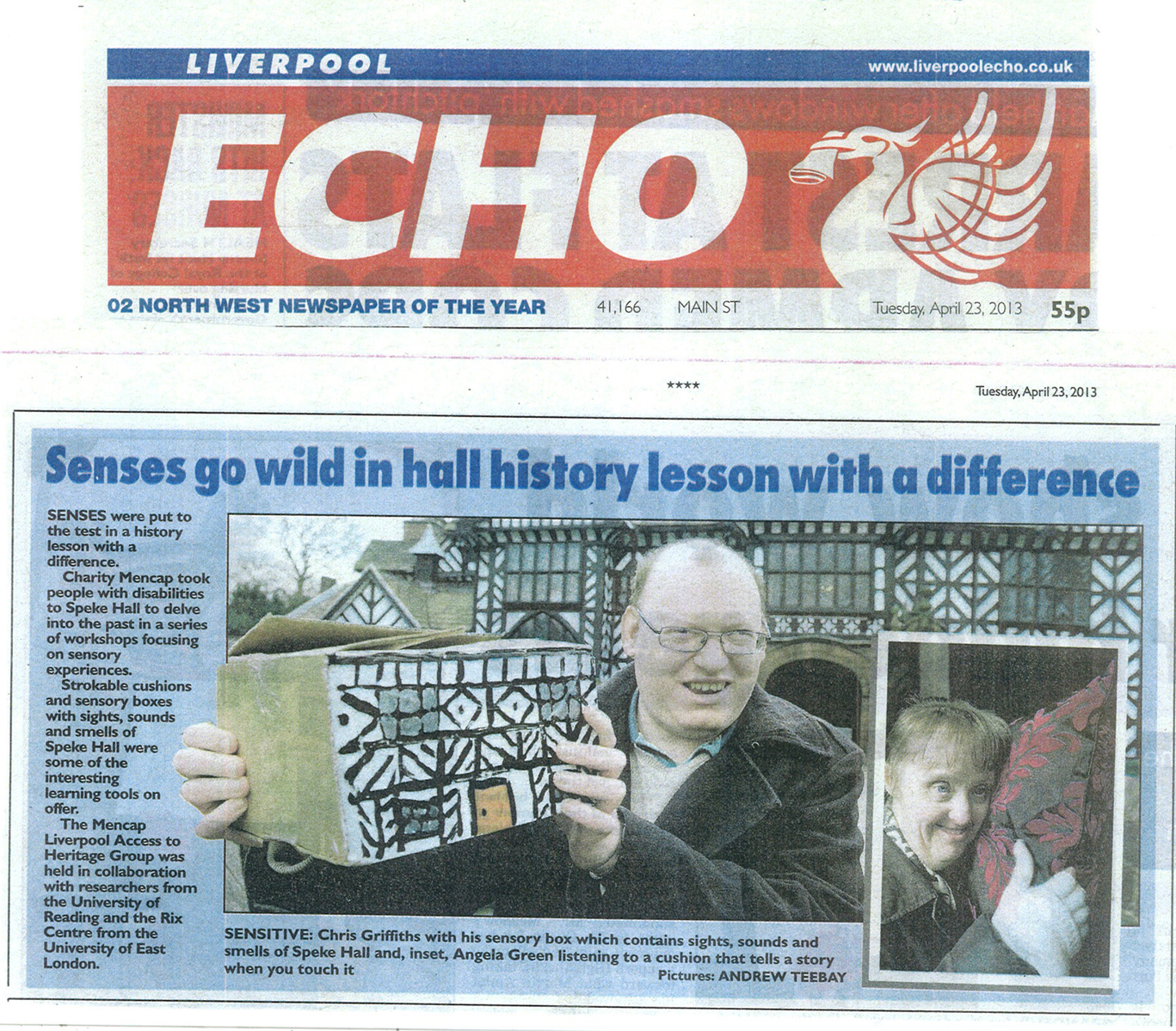
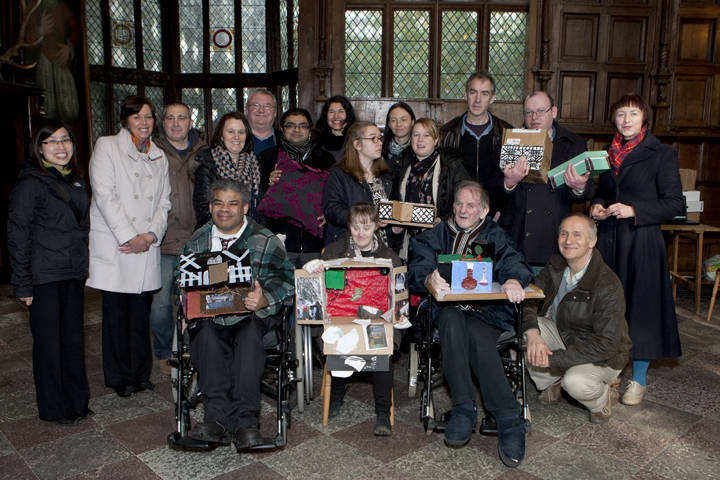
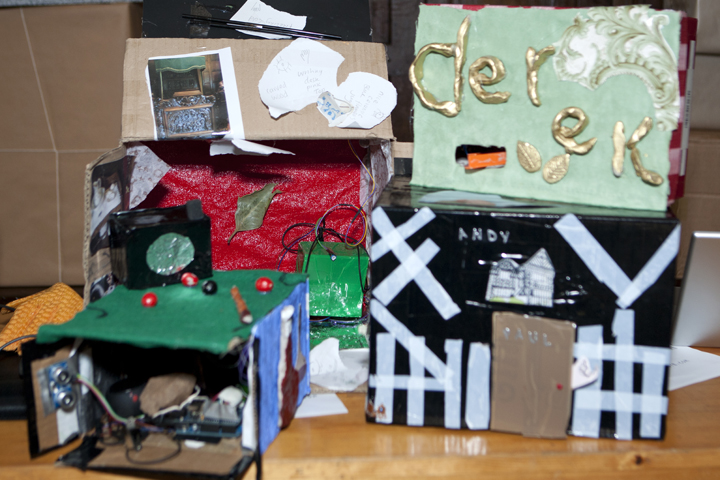
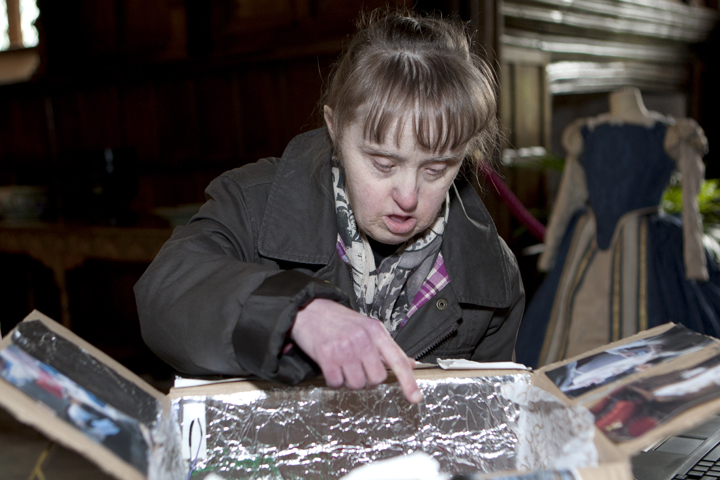
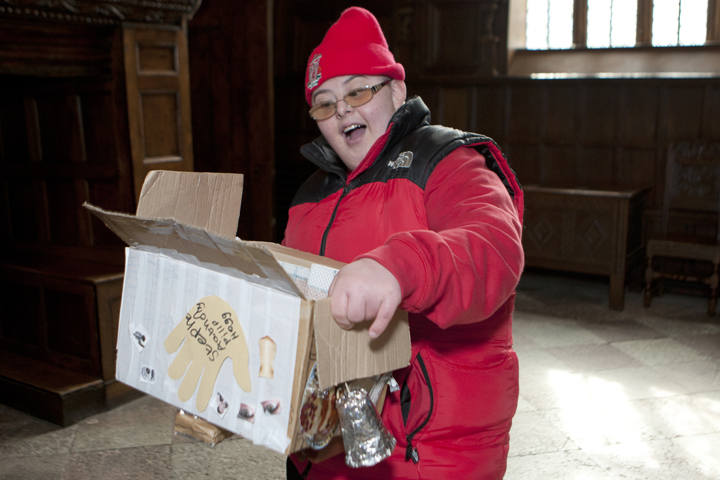
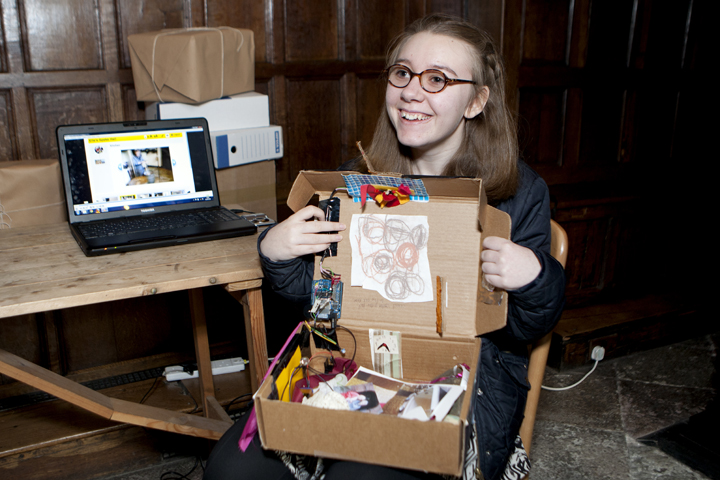 We also held a
We also held a 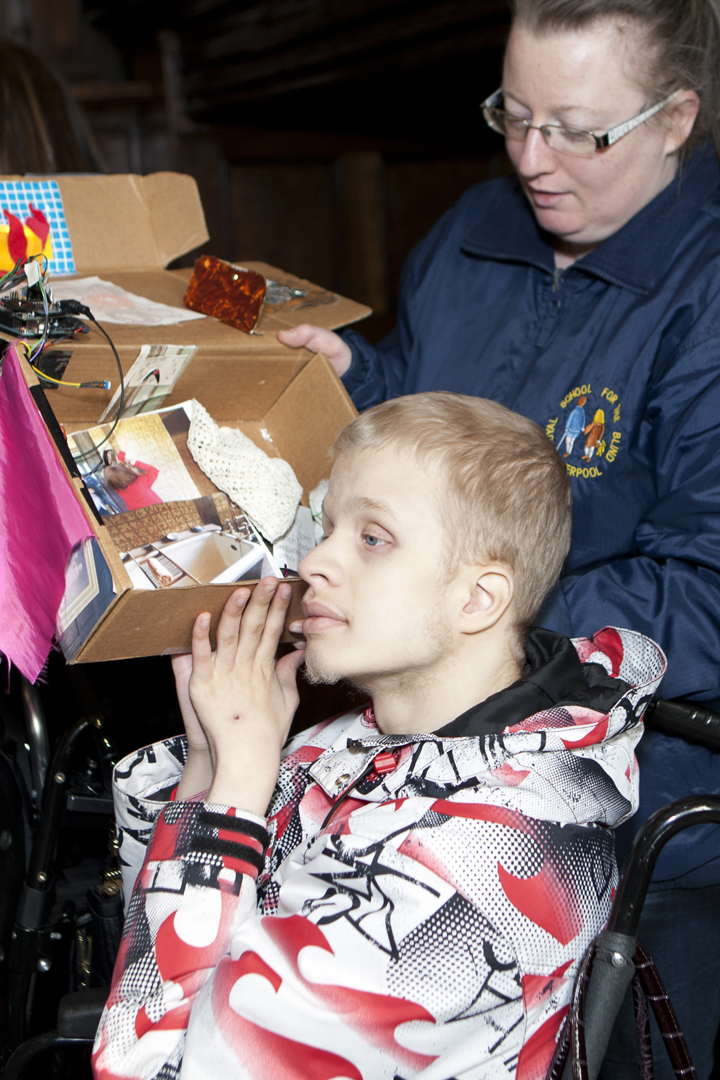
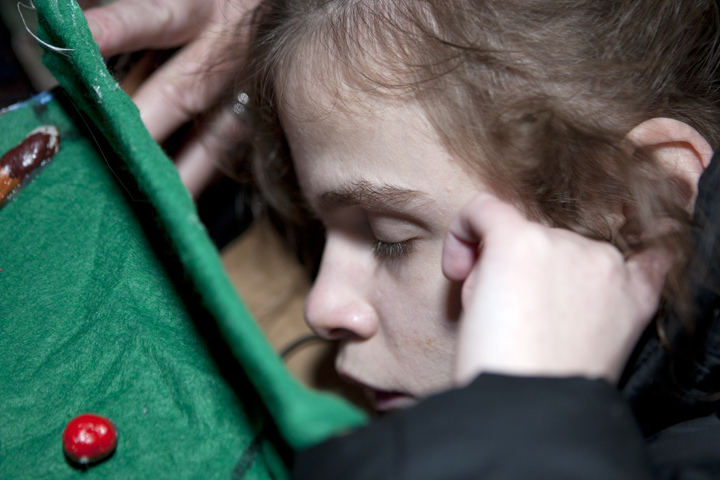
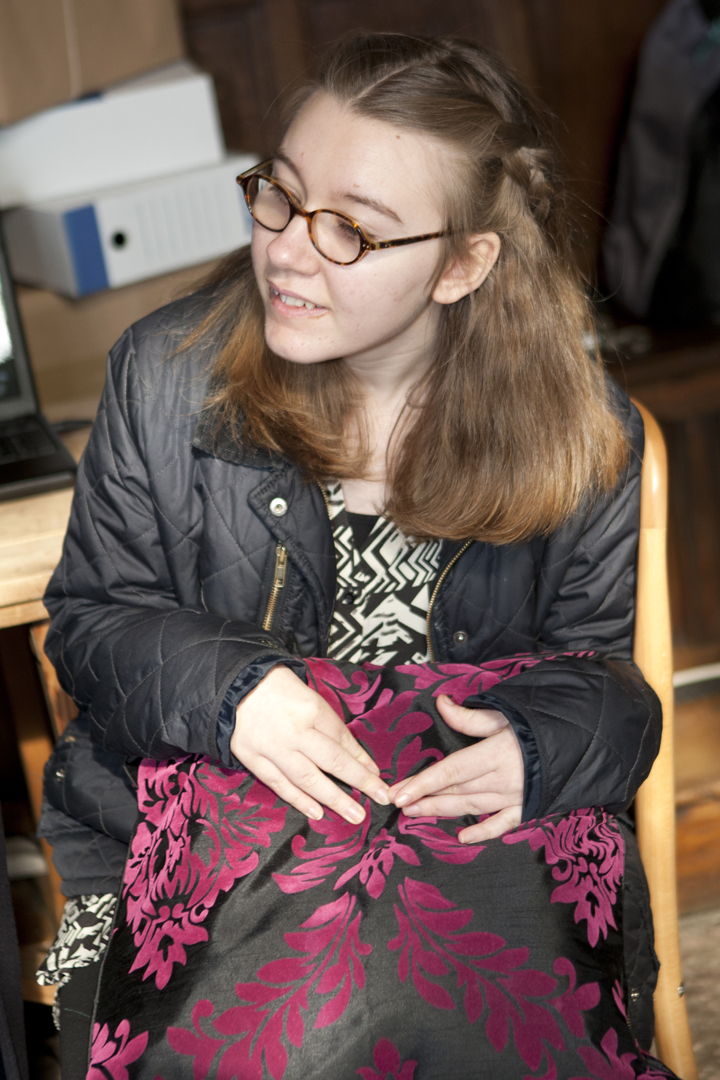
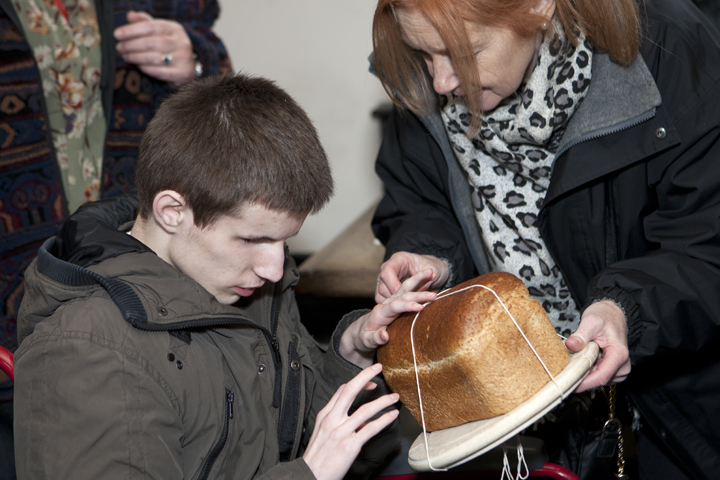
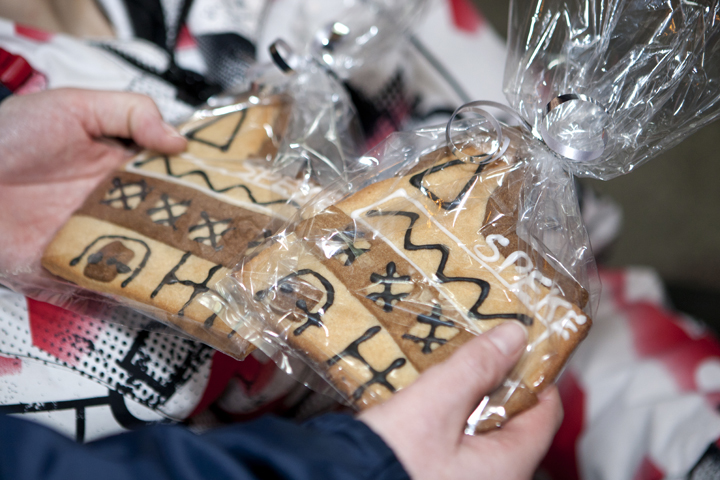 In this video below Co-Researcher Paul Lorde is shown with his sensory box, you can hear sounds he recorded from Speke Hall and see the electronics that trigger the sounds. Paul spent the afternoon in the Great Hall showing his research to the public and he sums up the day.
In this video below Co-Researcher Paul Lorde is shown with his sensory box, you can hear sounds he recorded from Speke Hall and see the electronics that trigger the sounds. Paul spent the afternoon in the Great Hall showing his research to the public and he sums up the day.